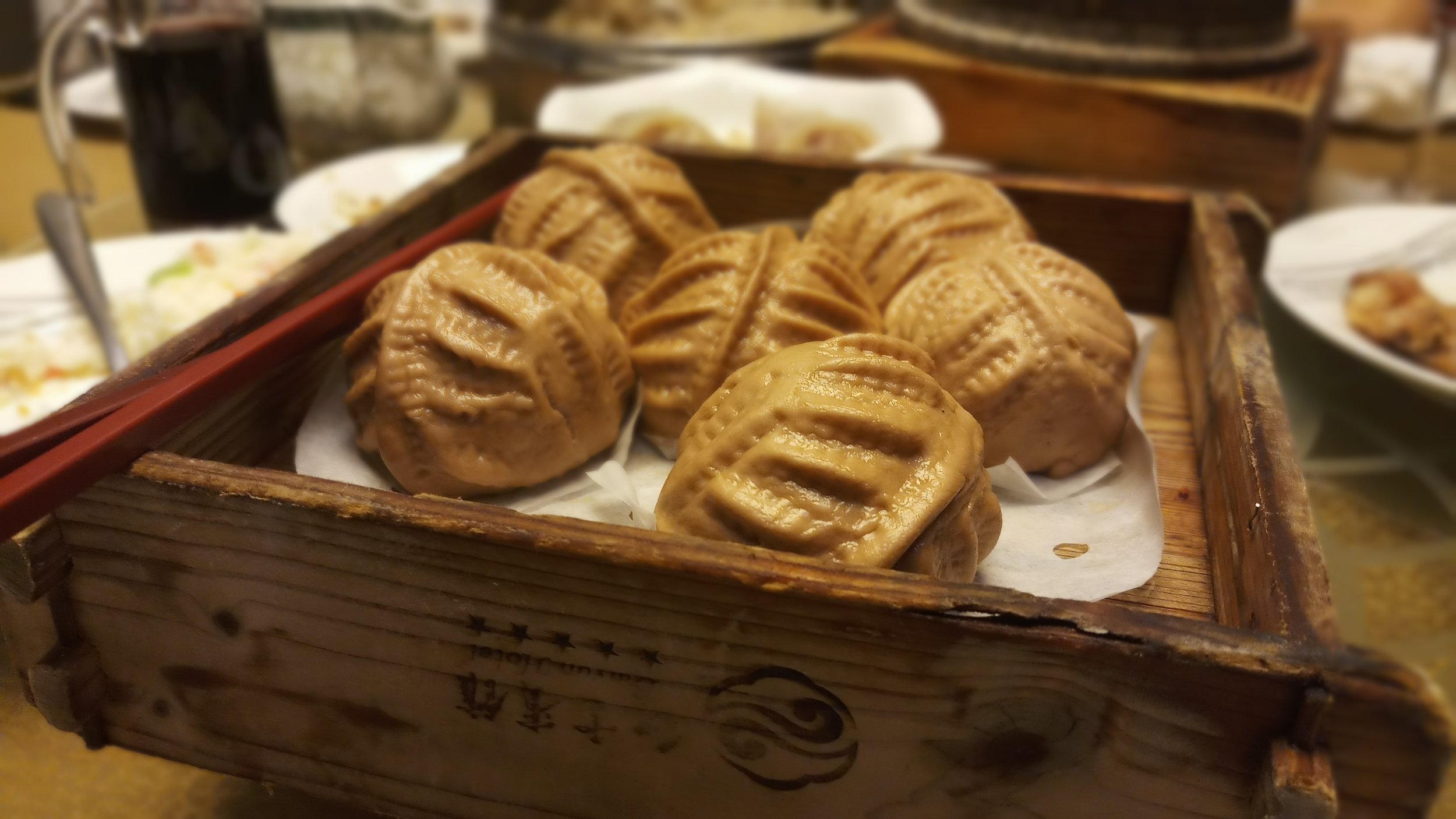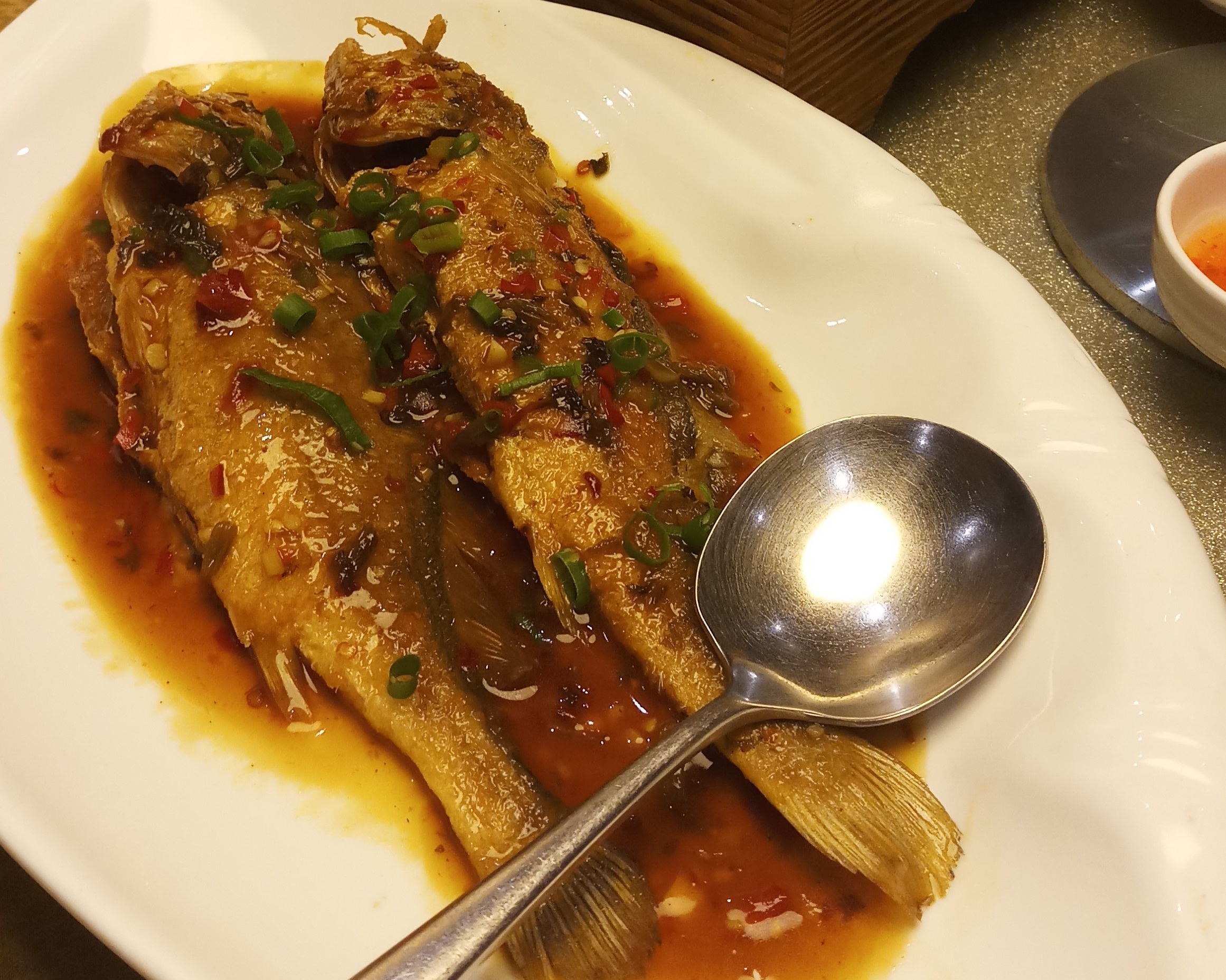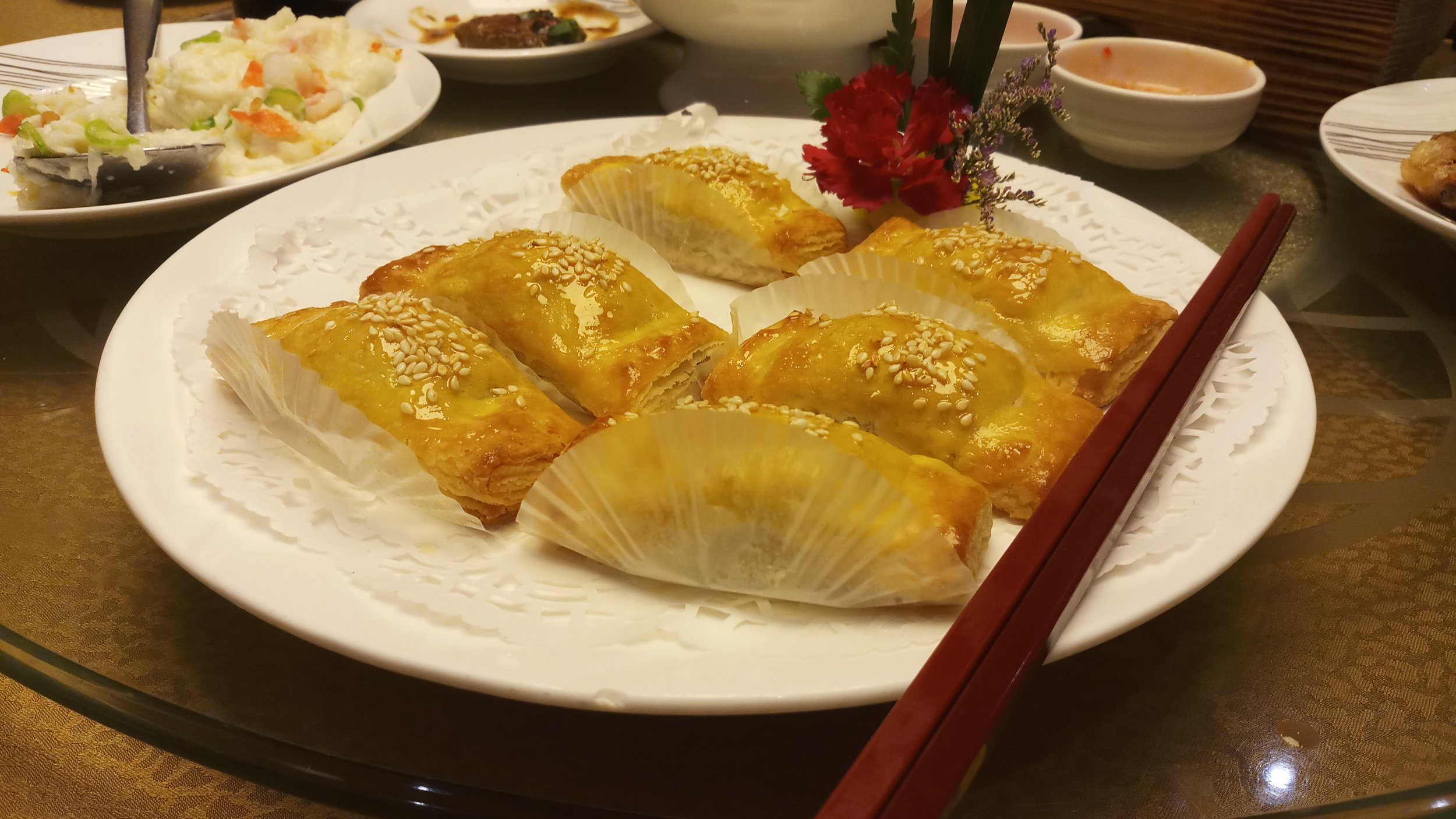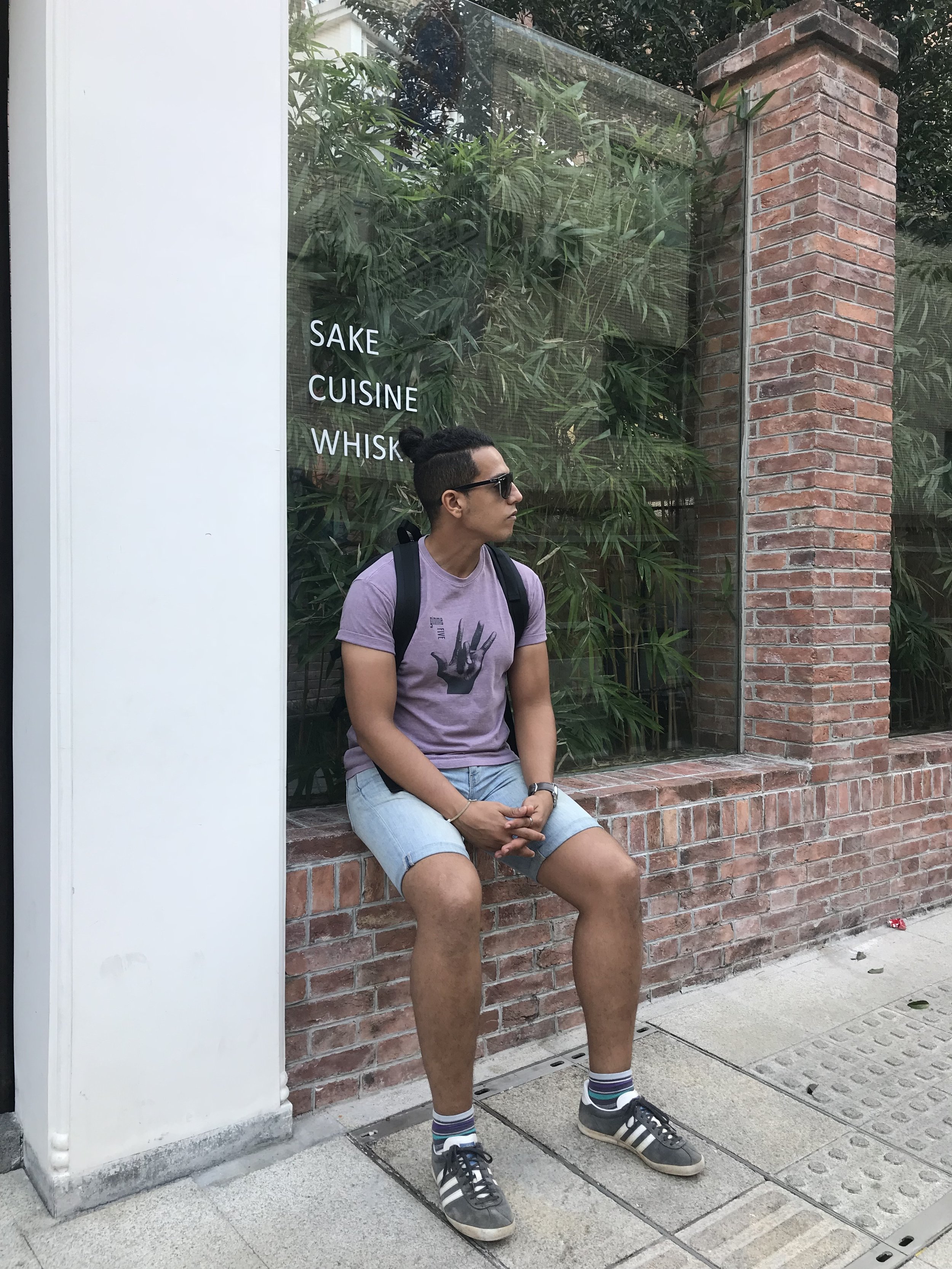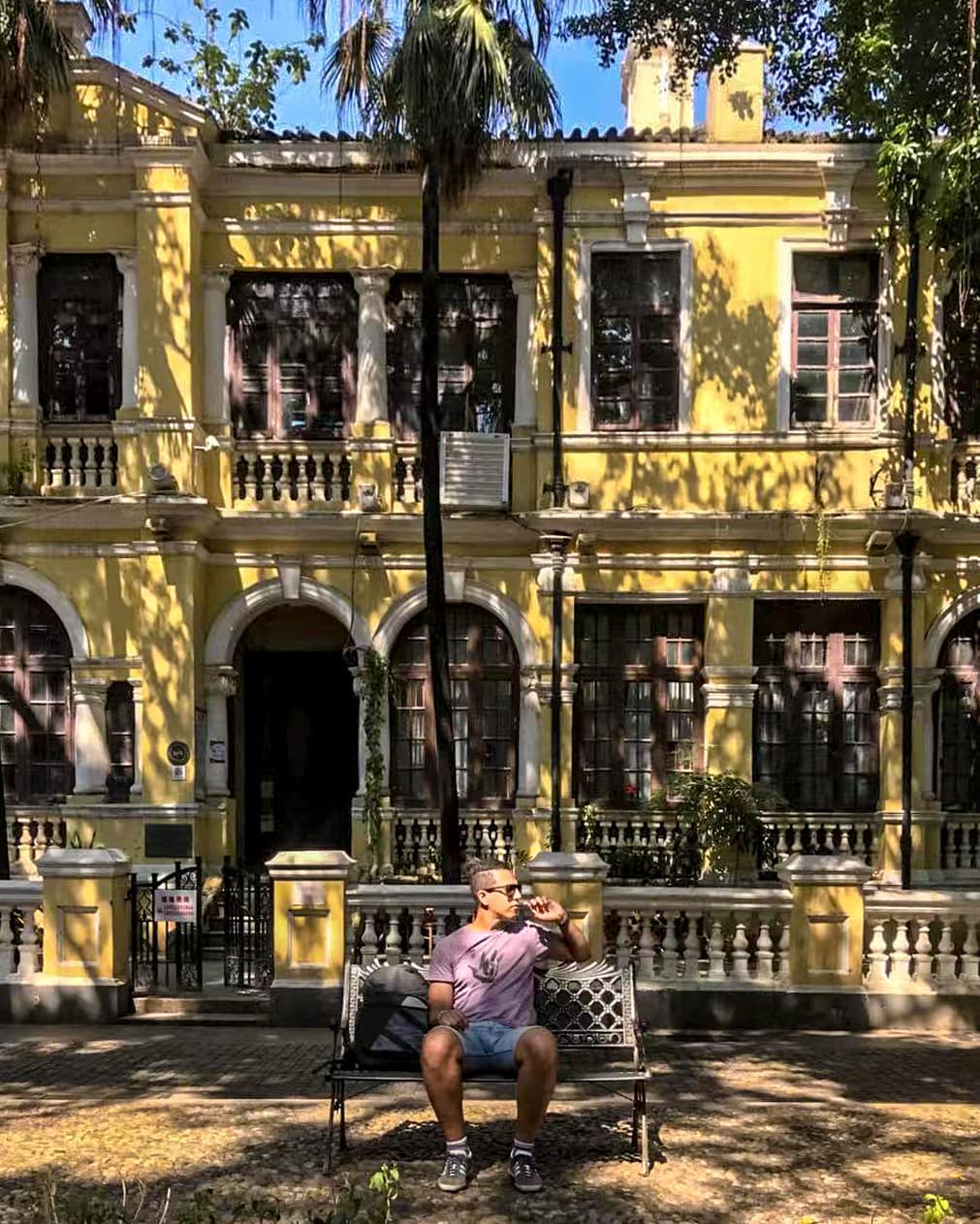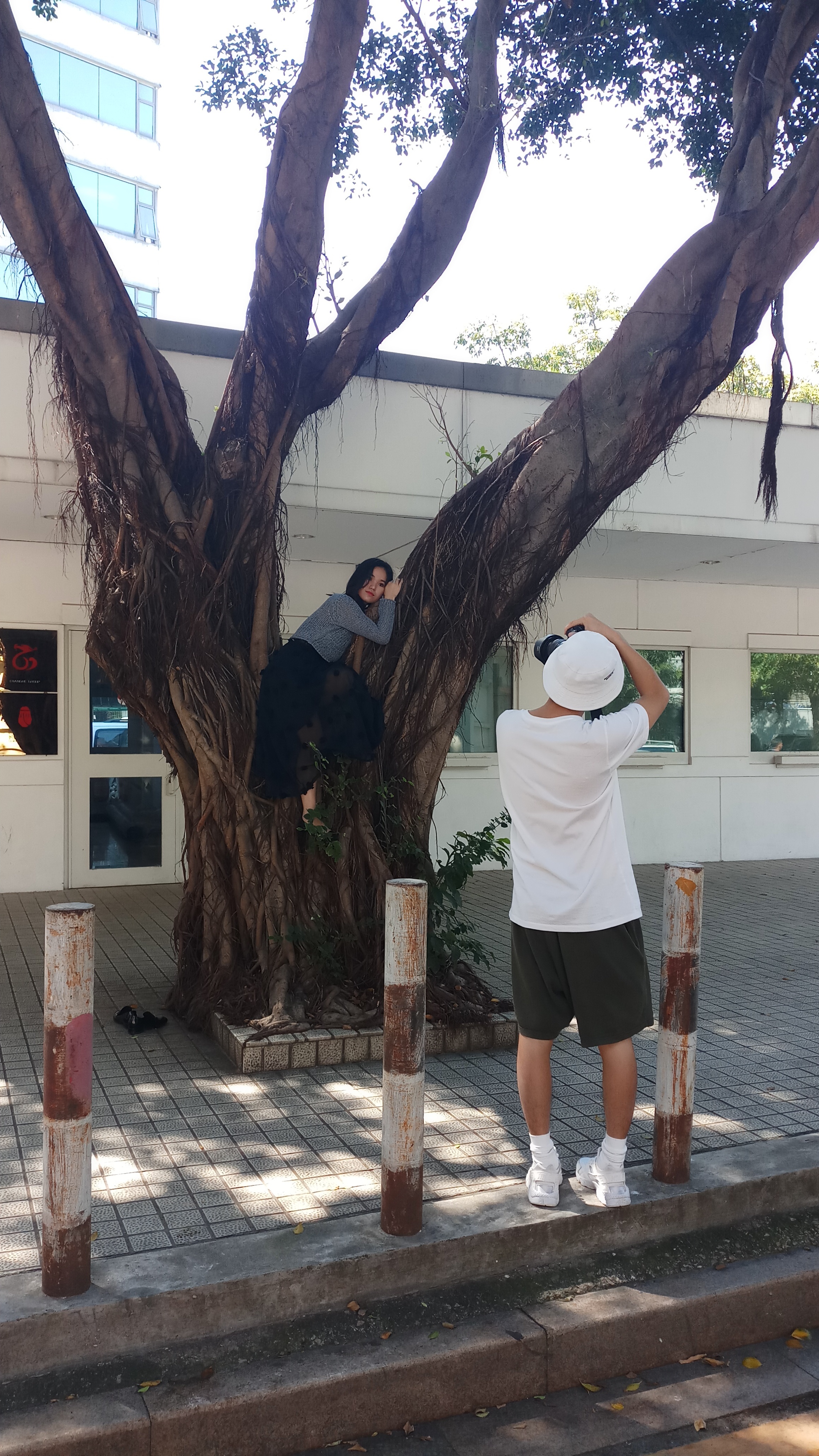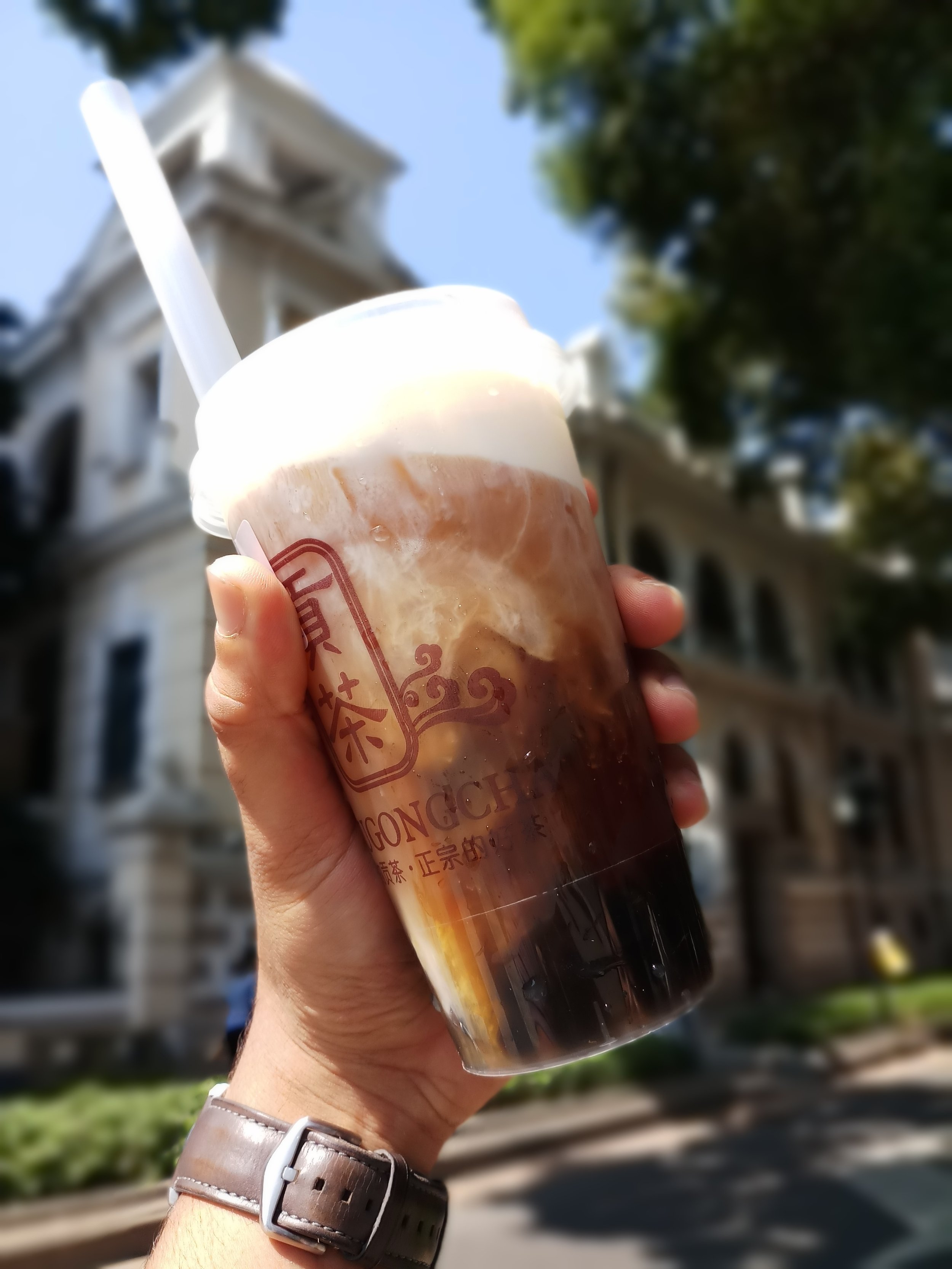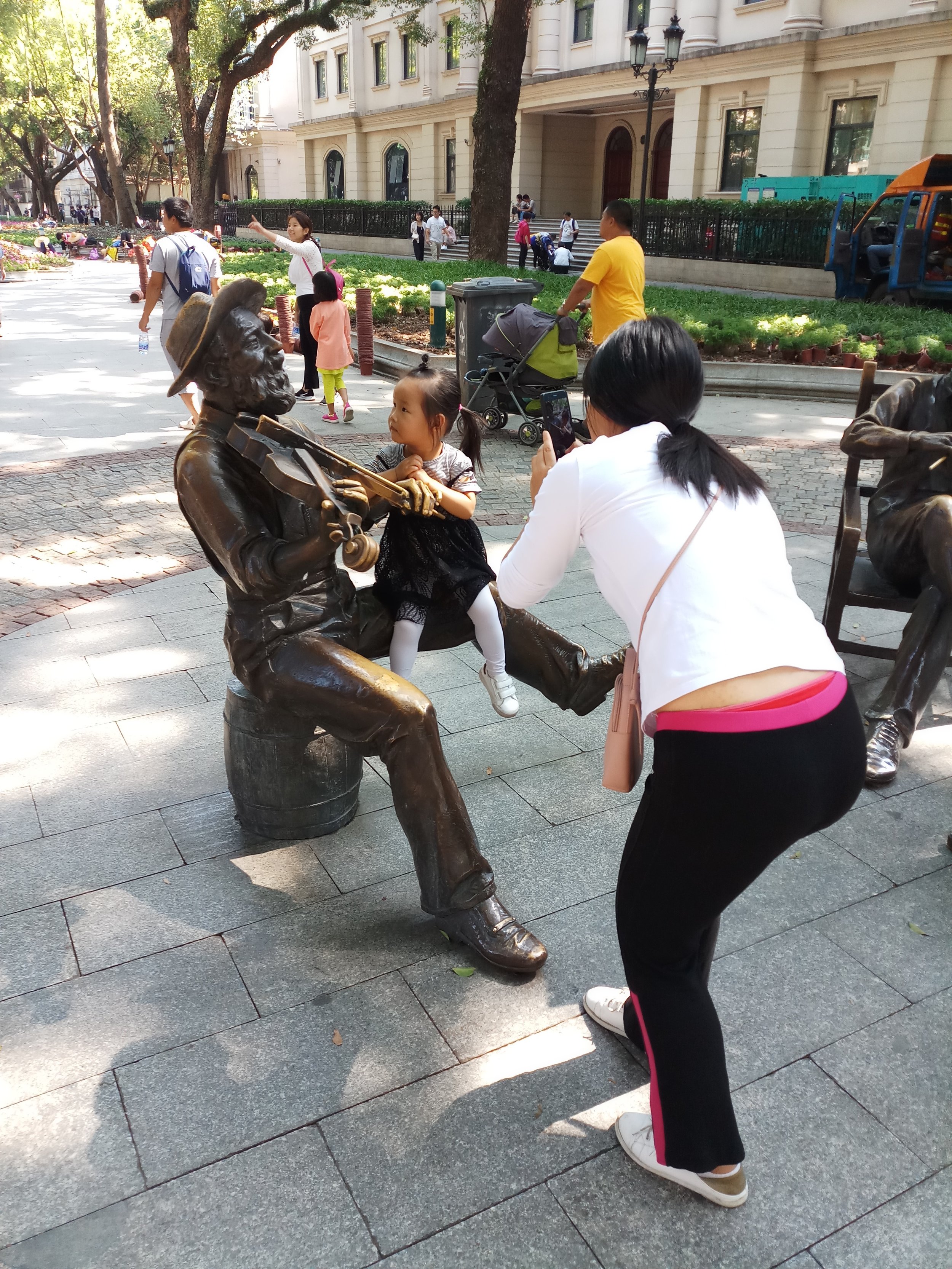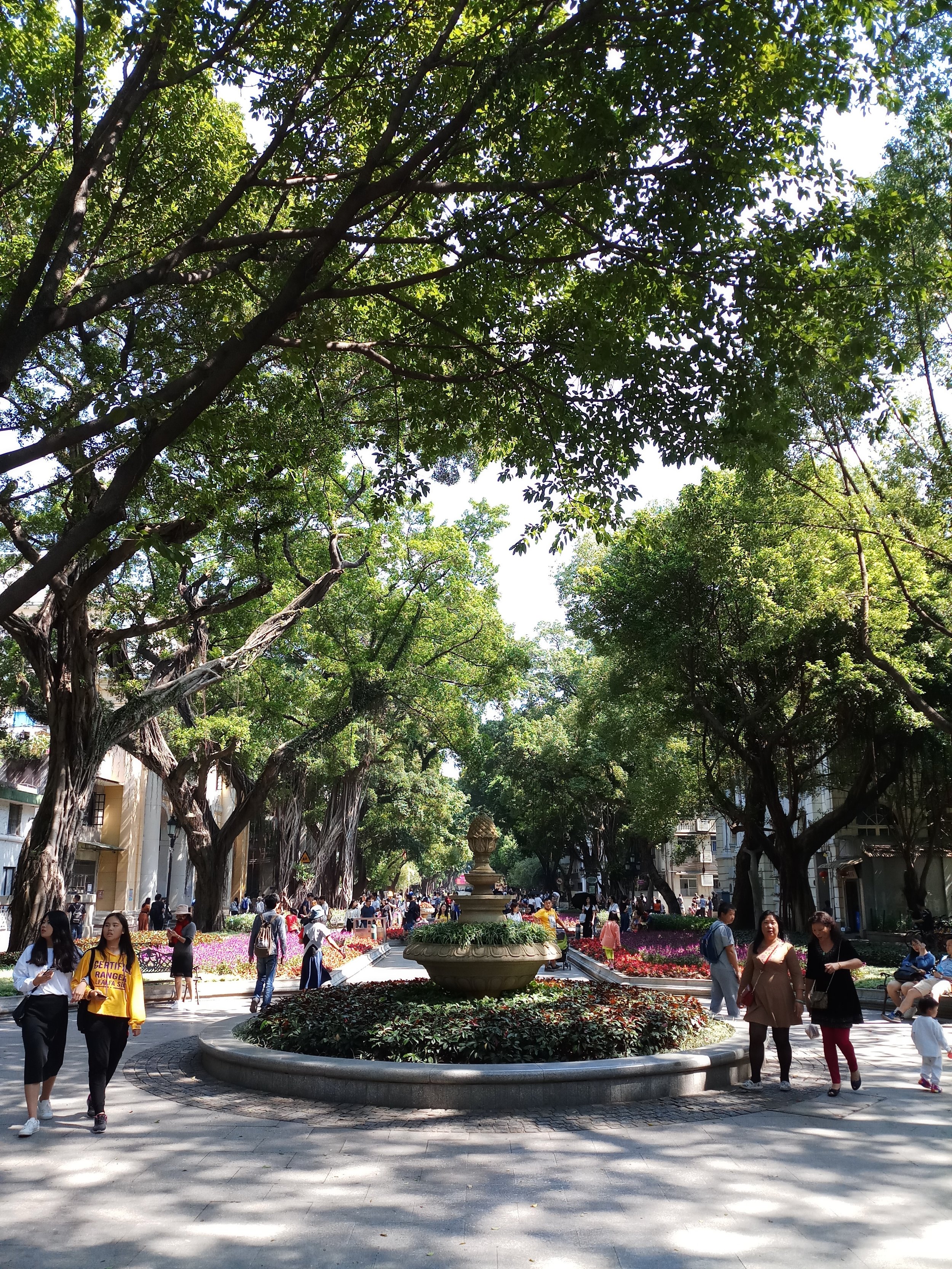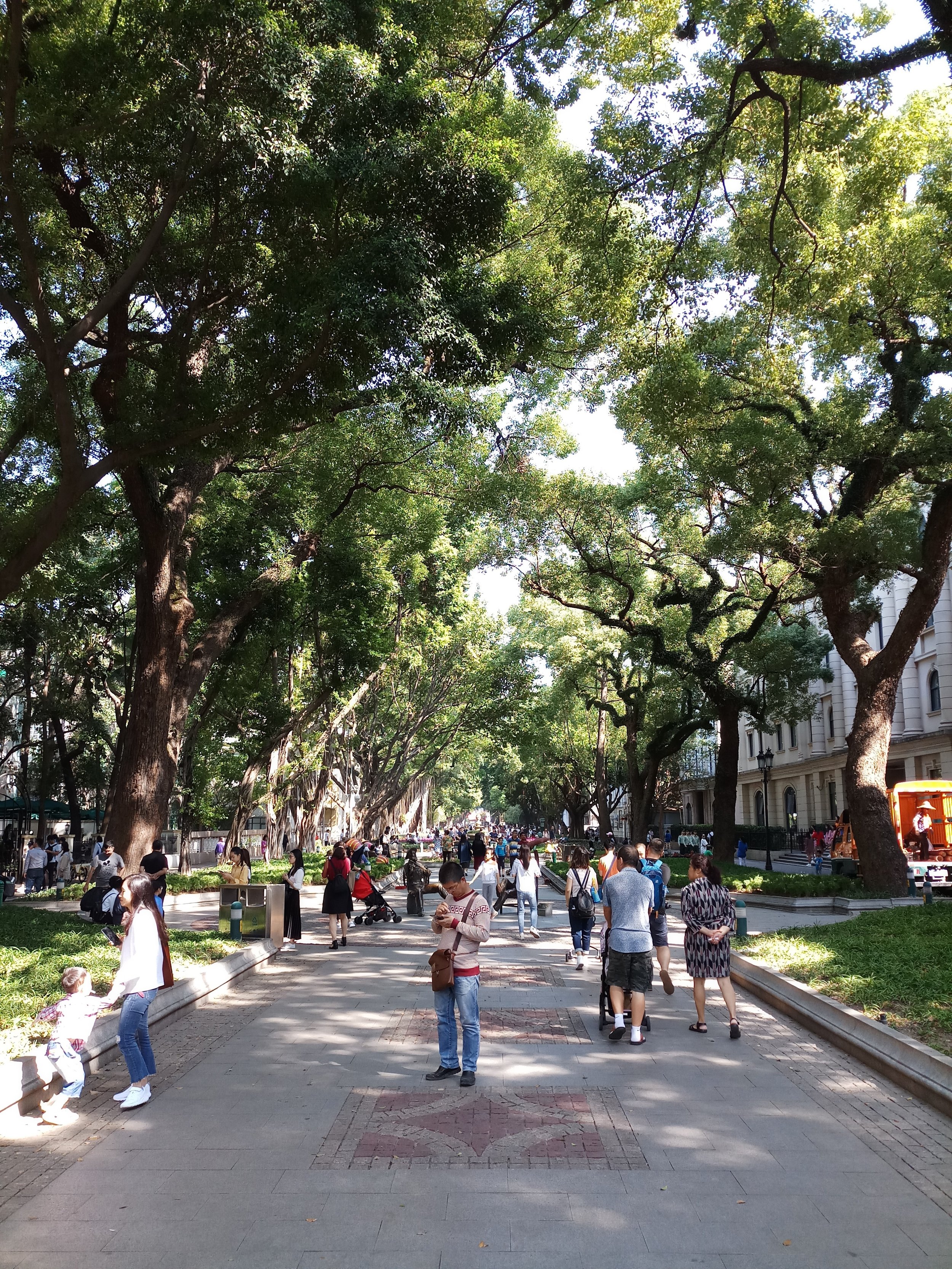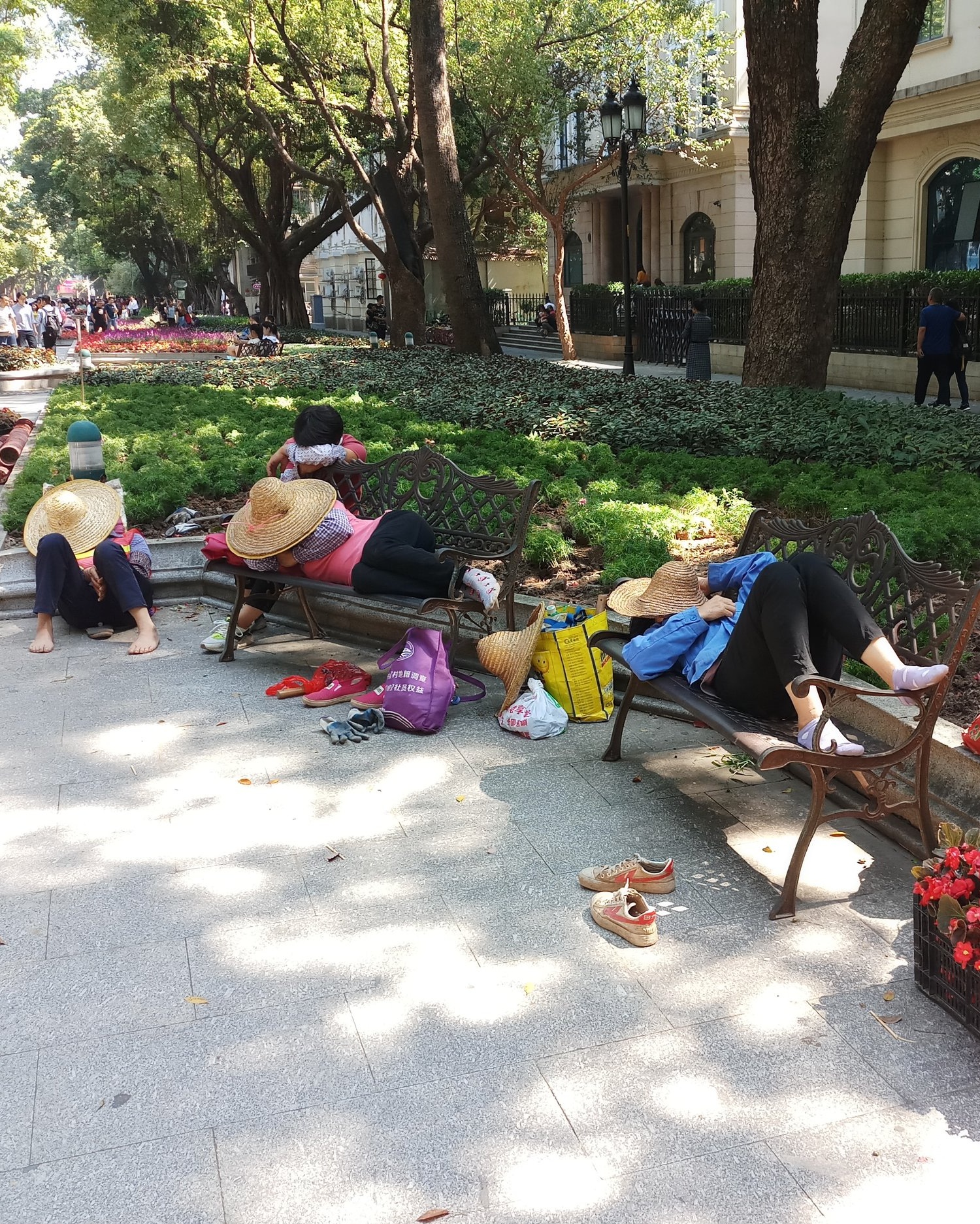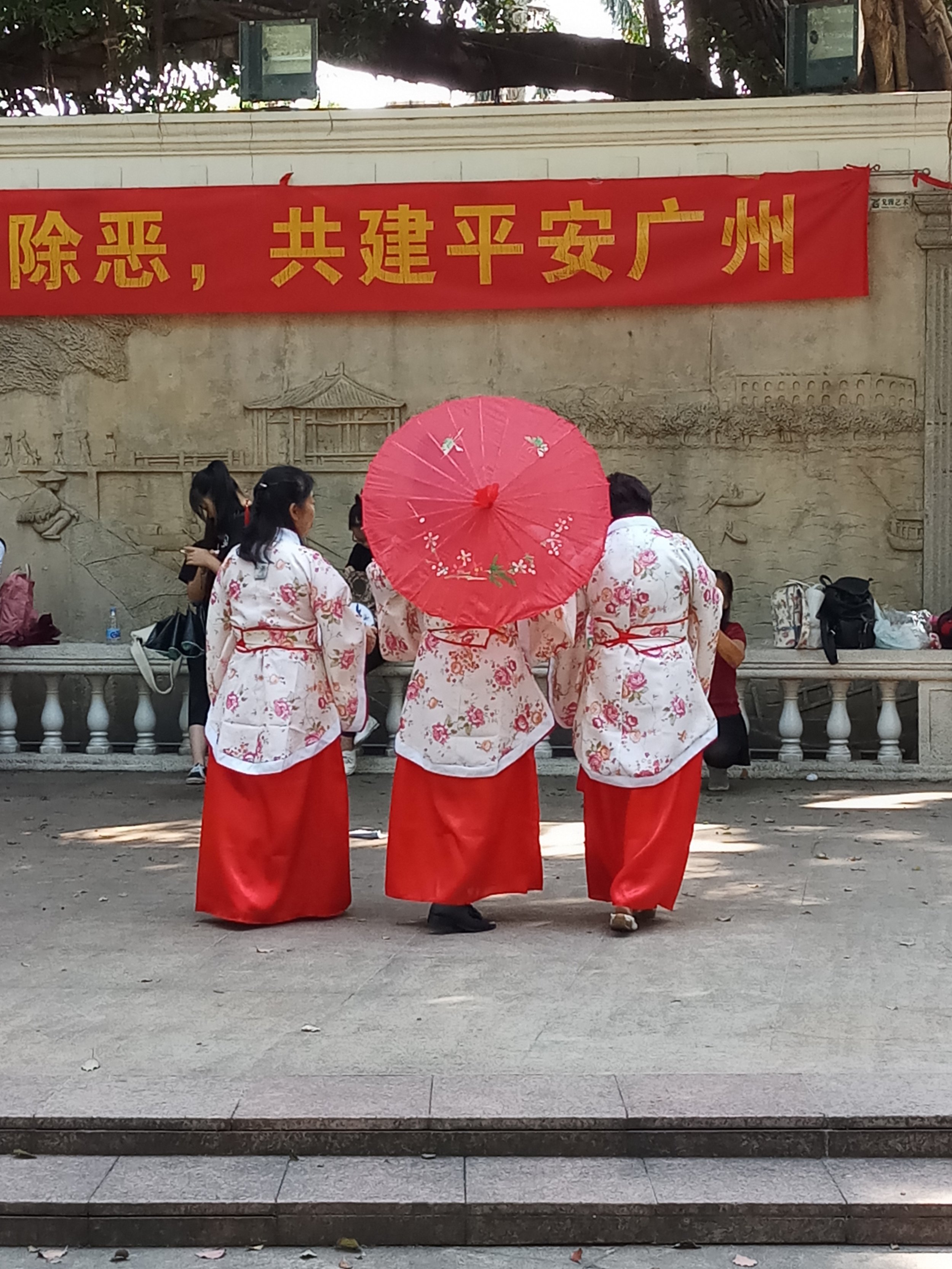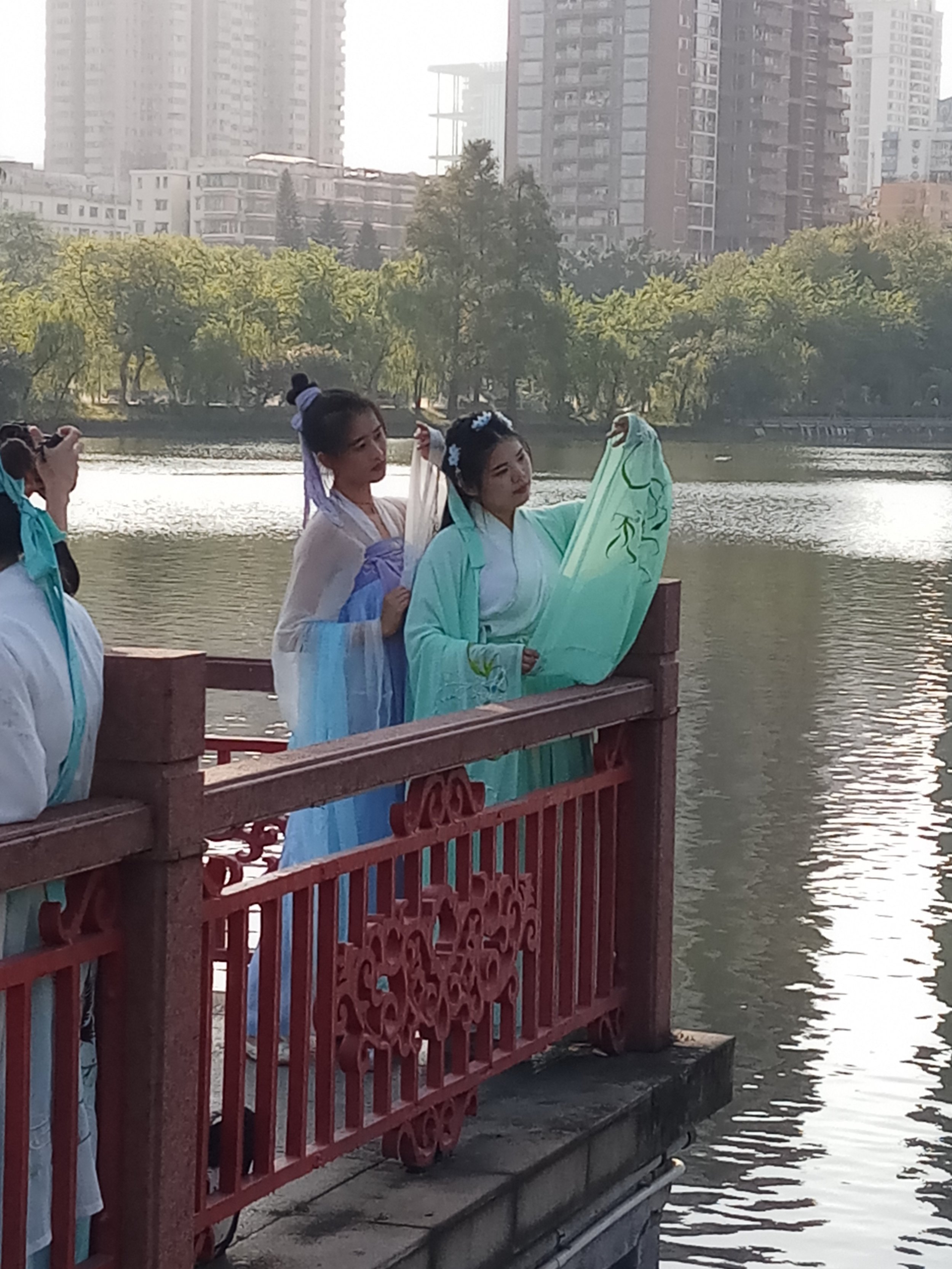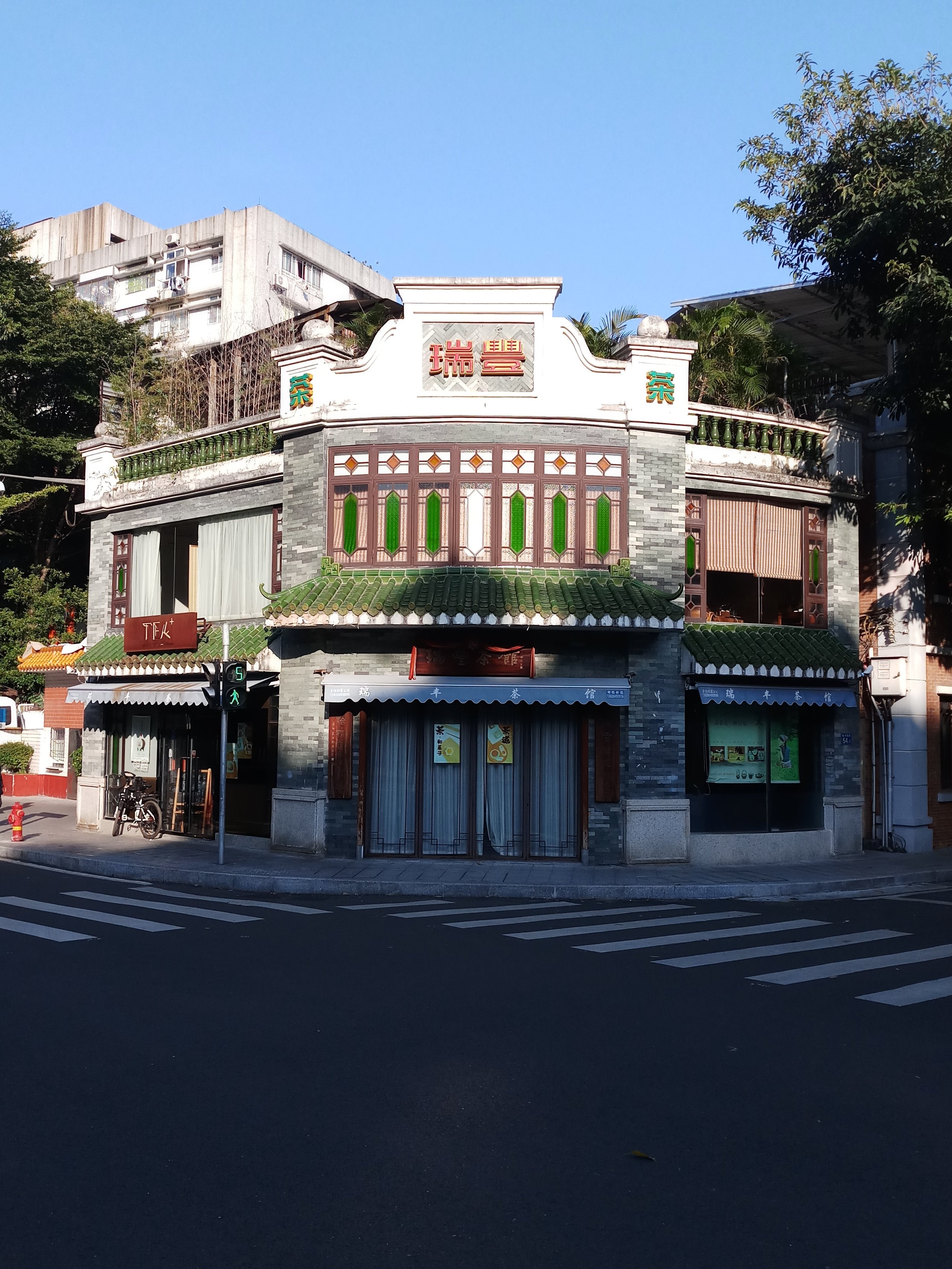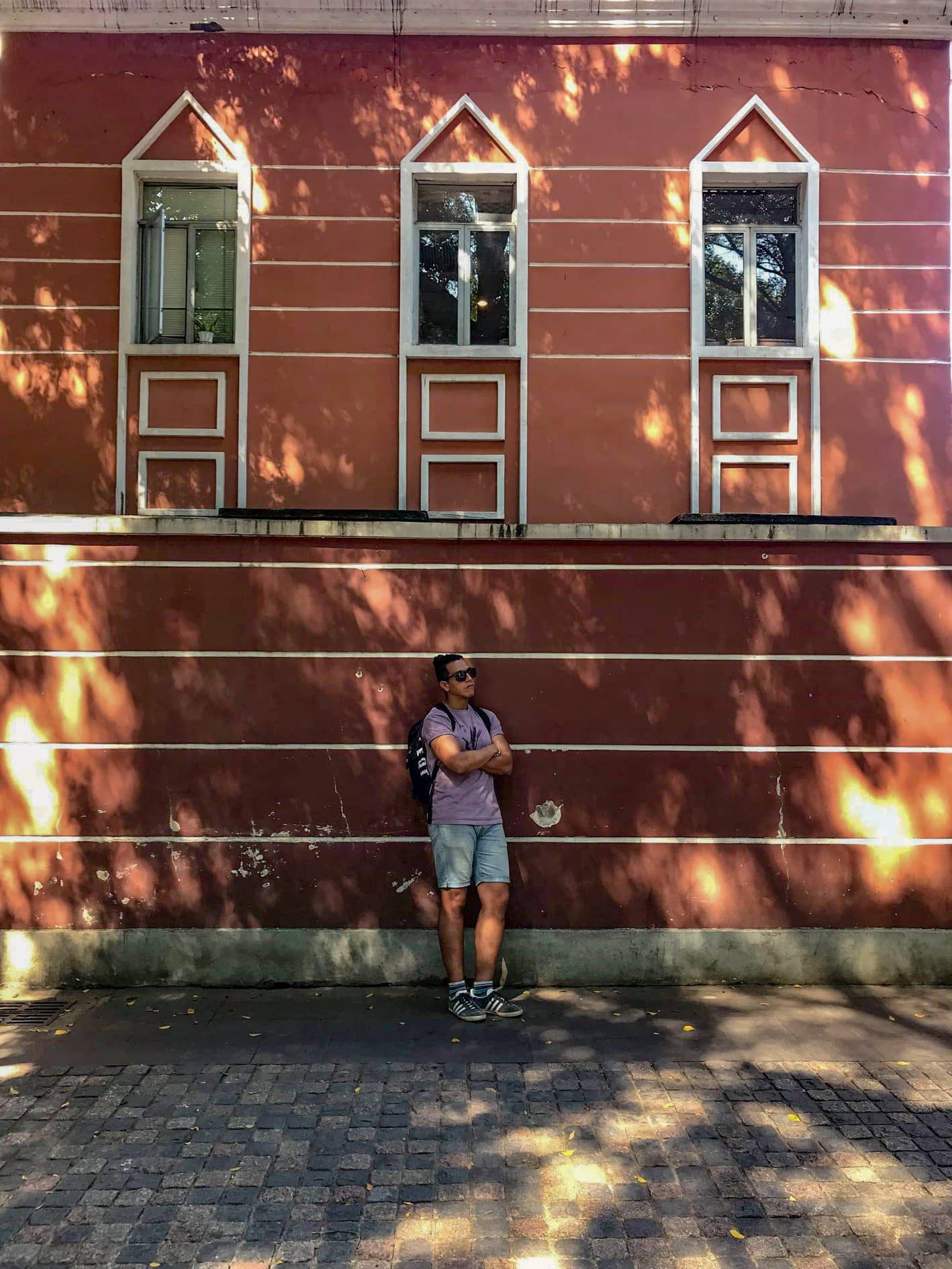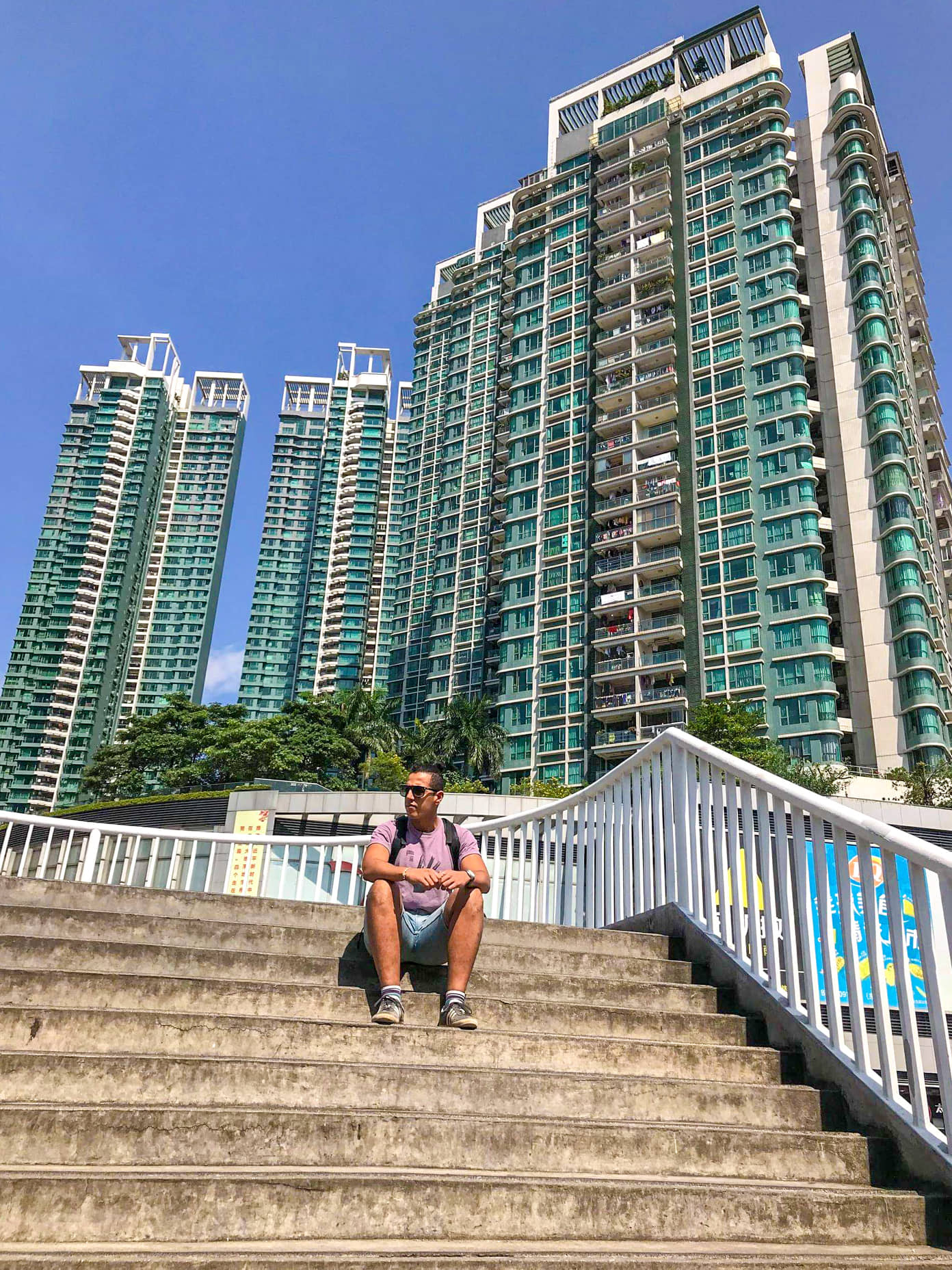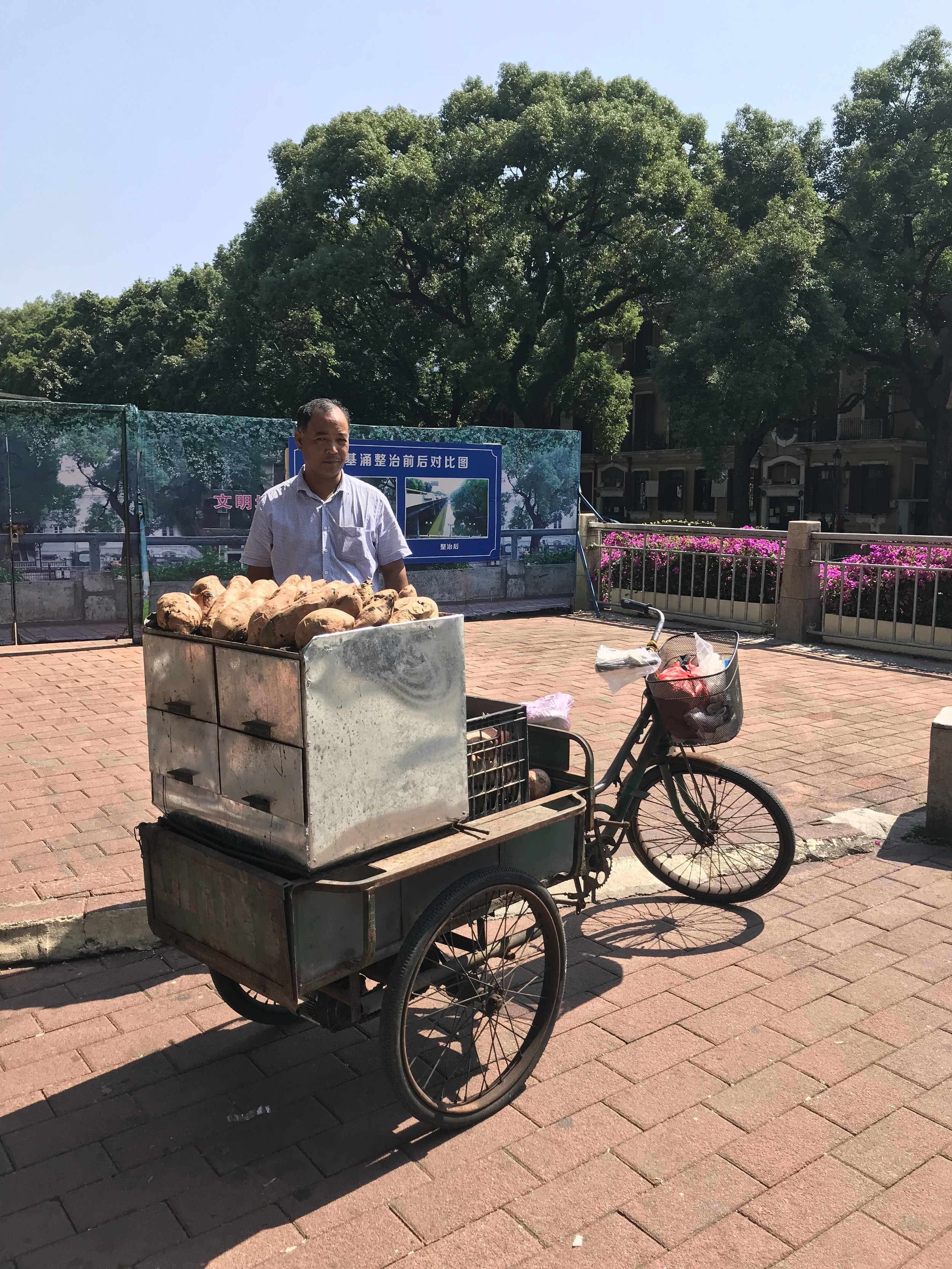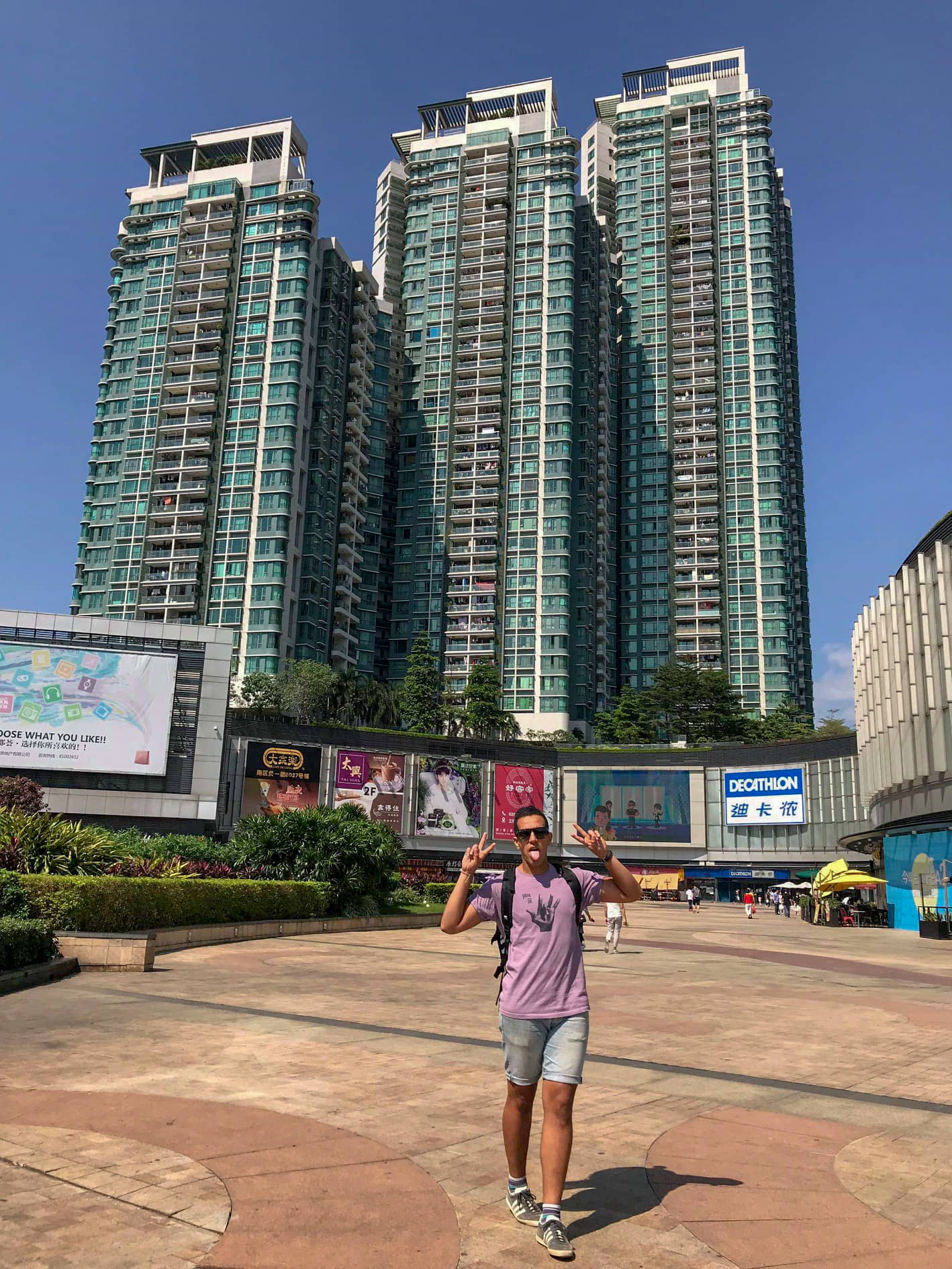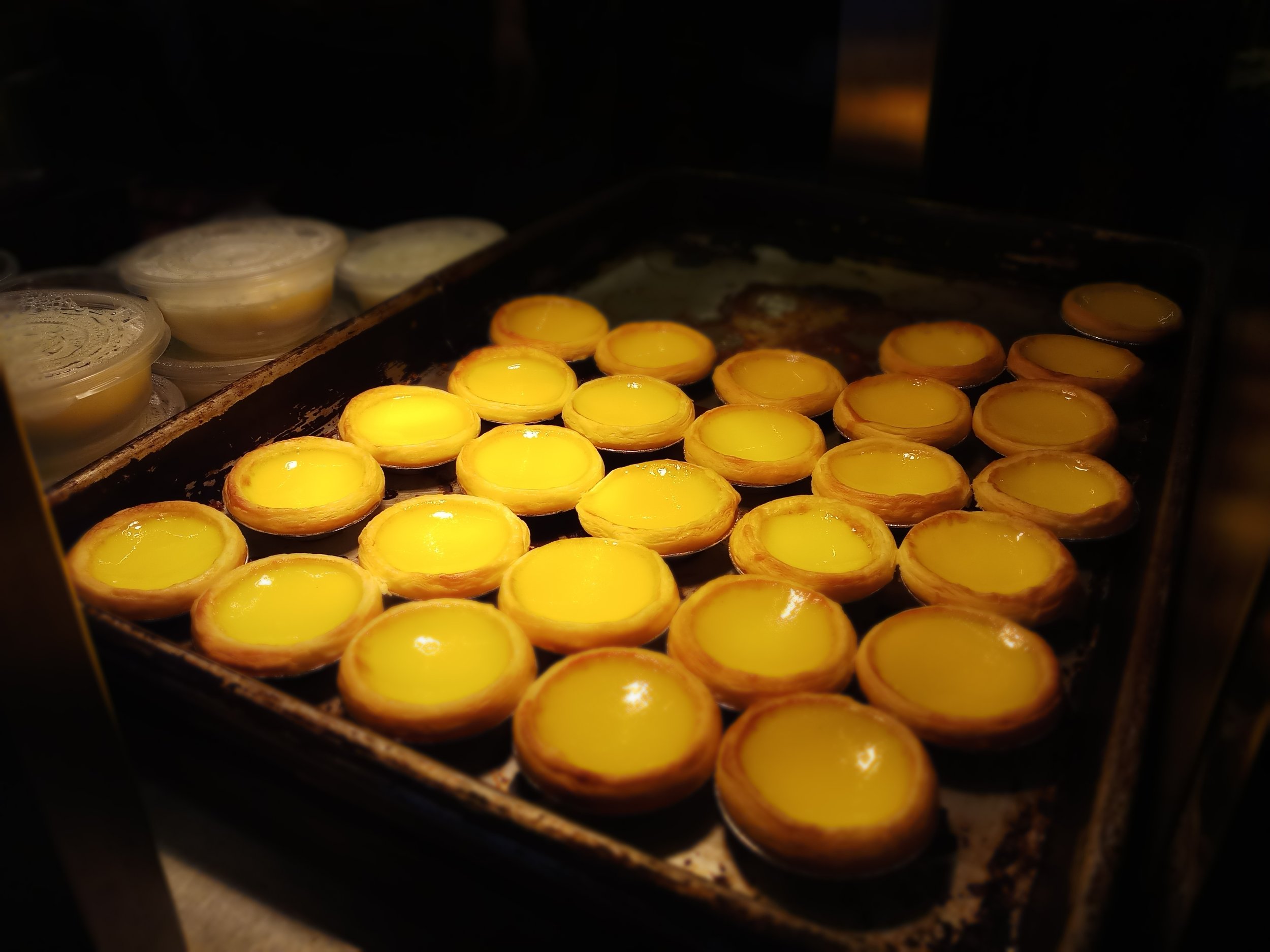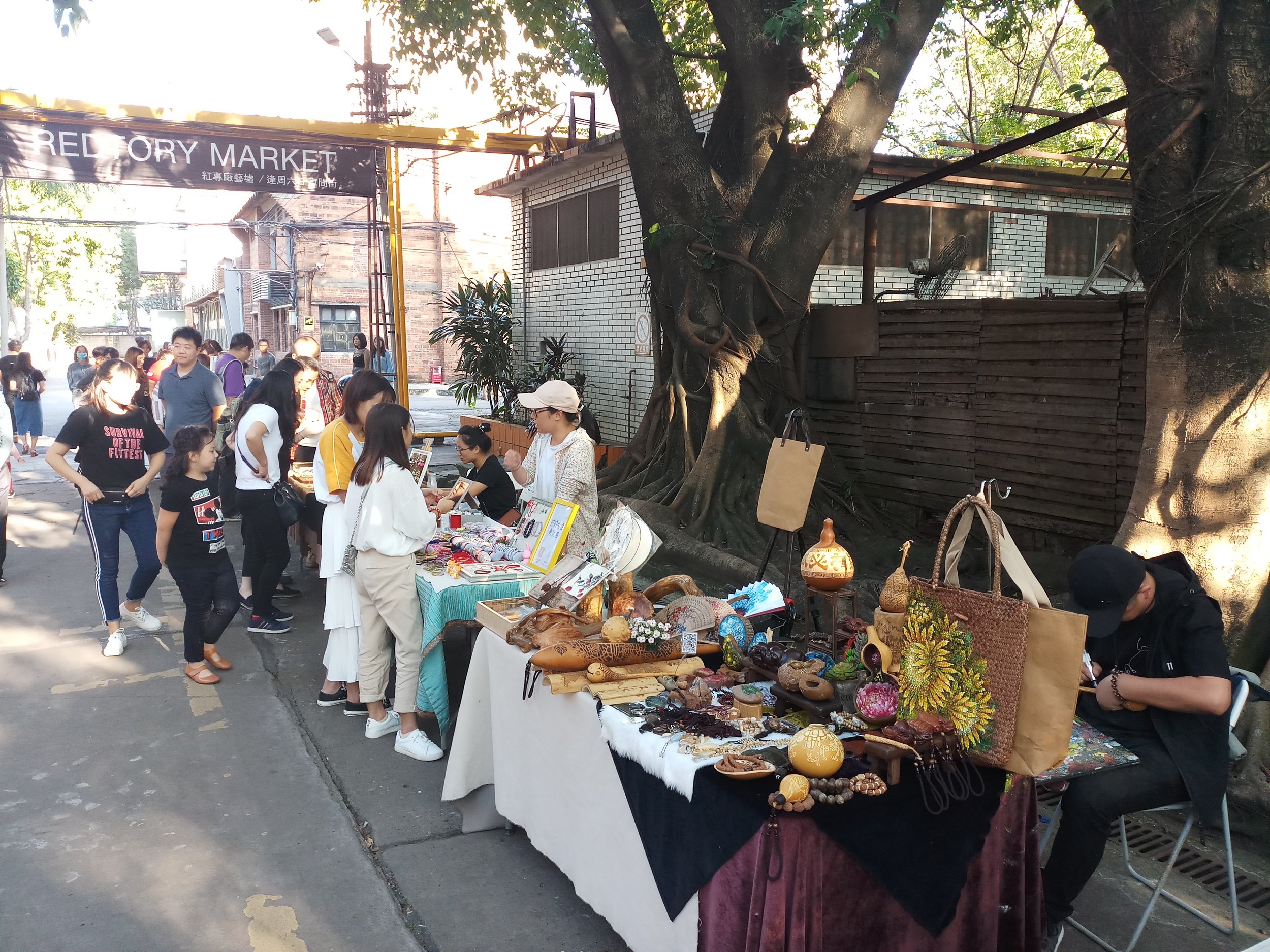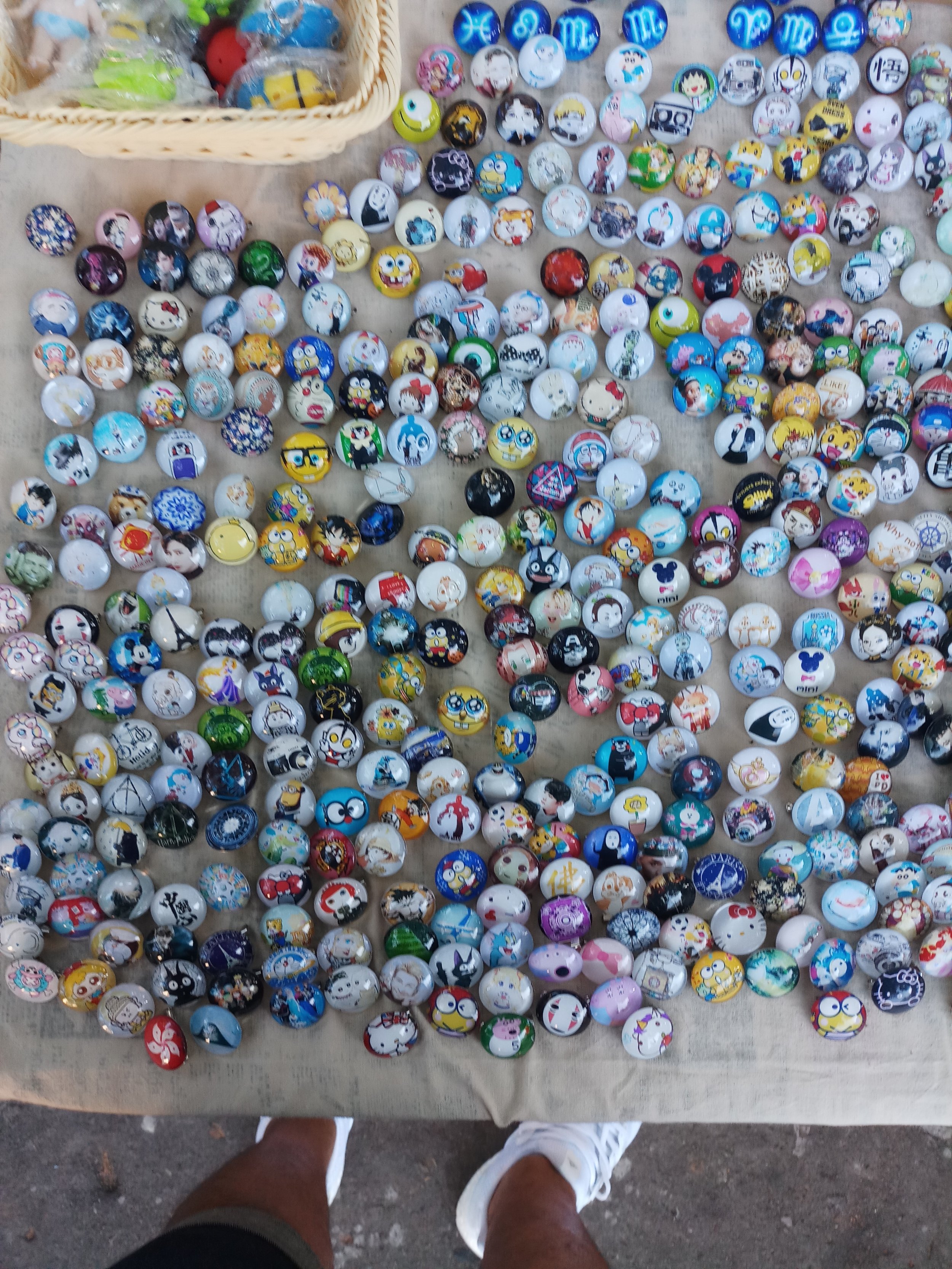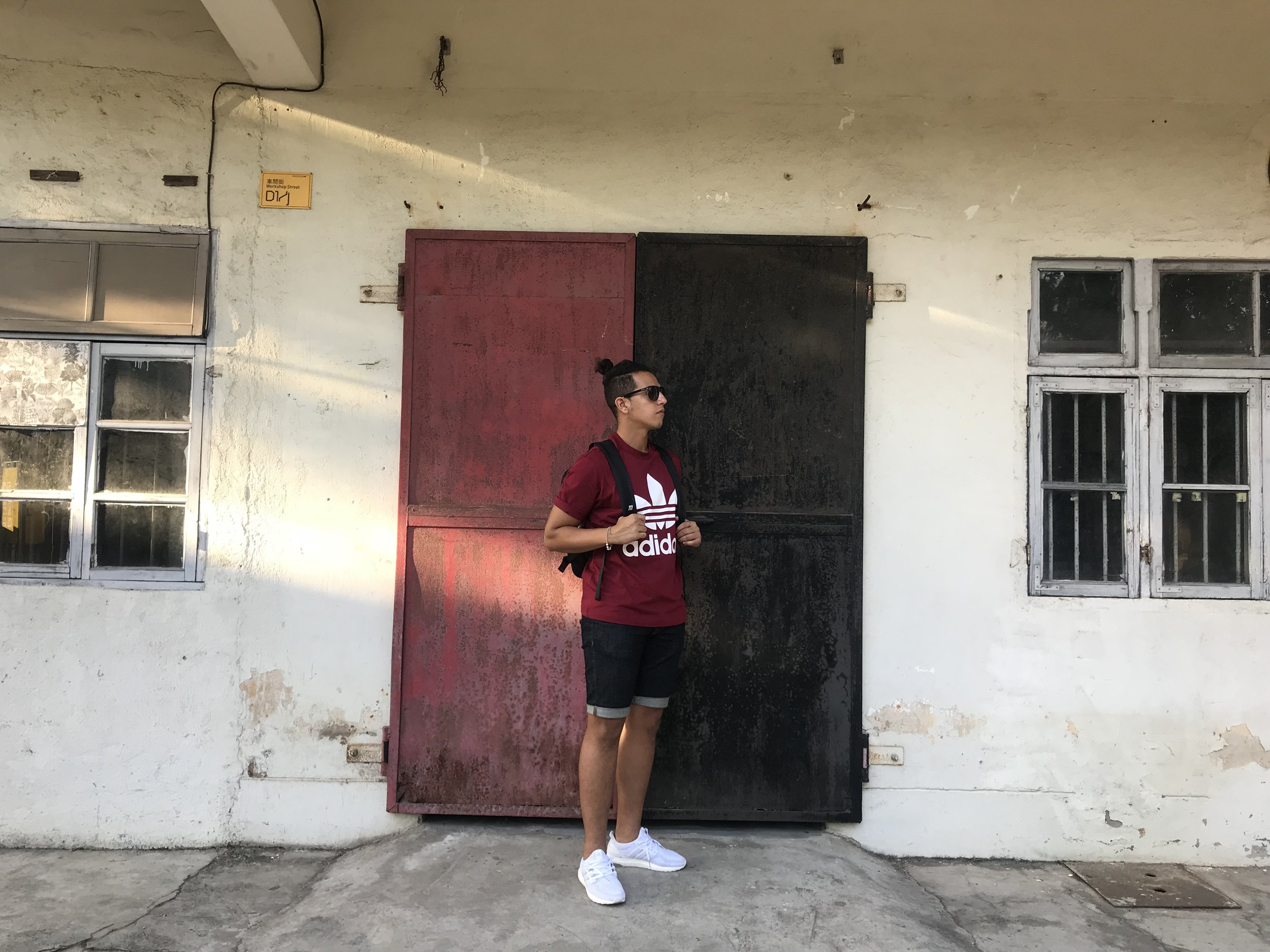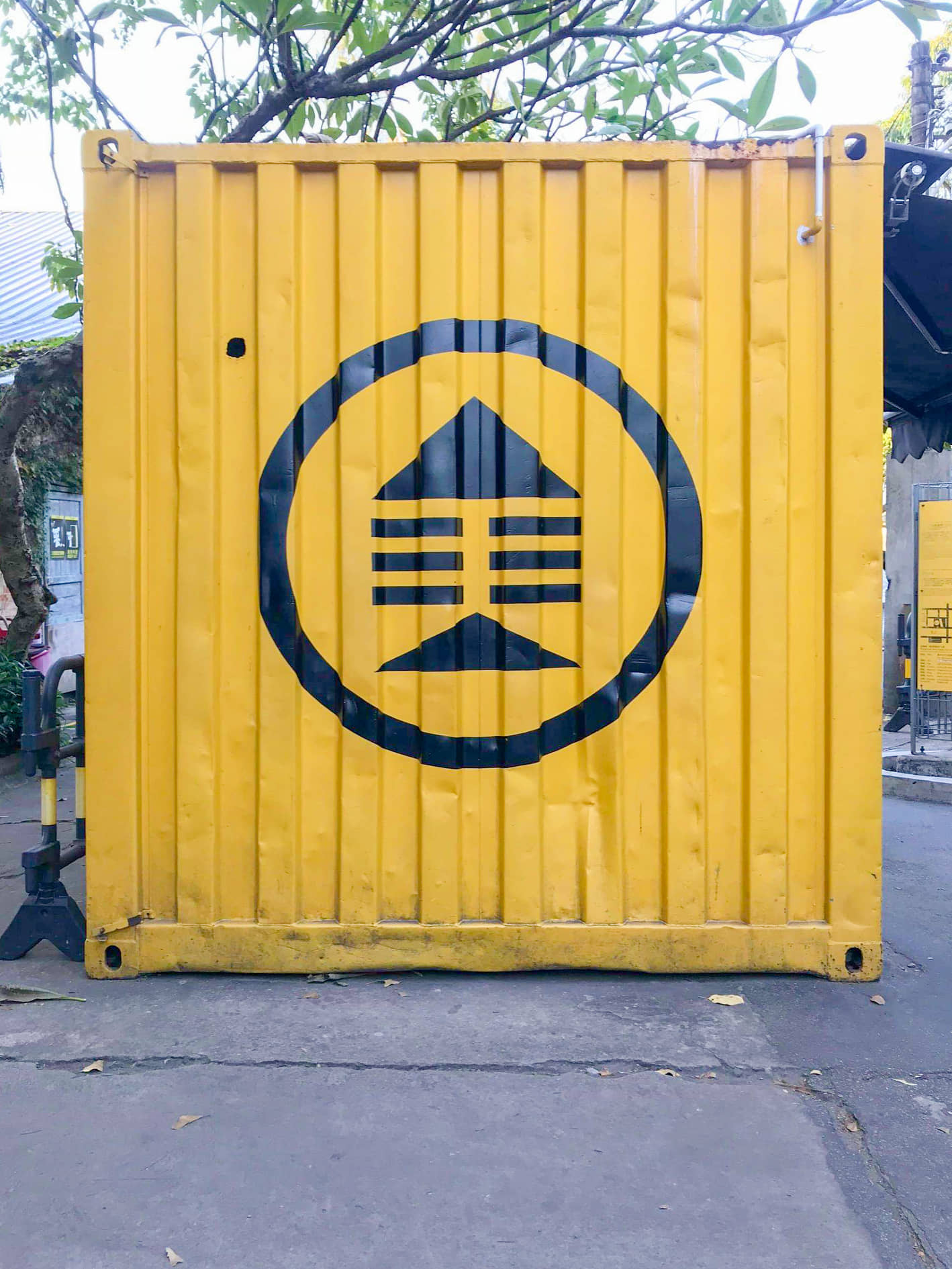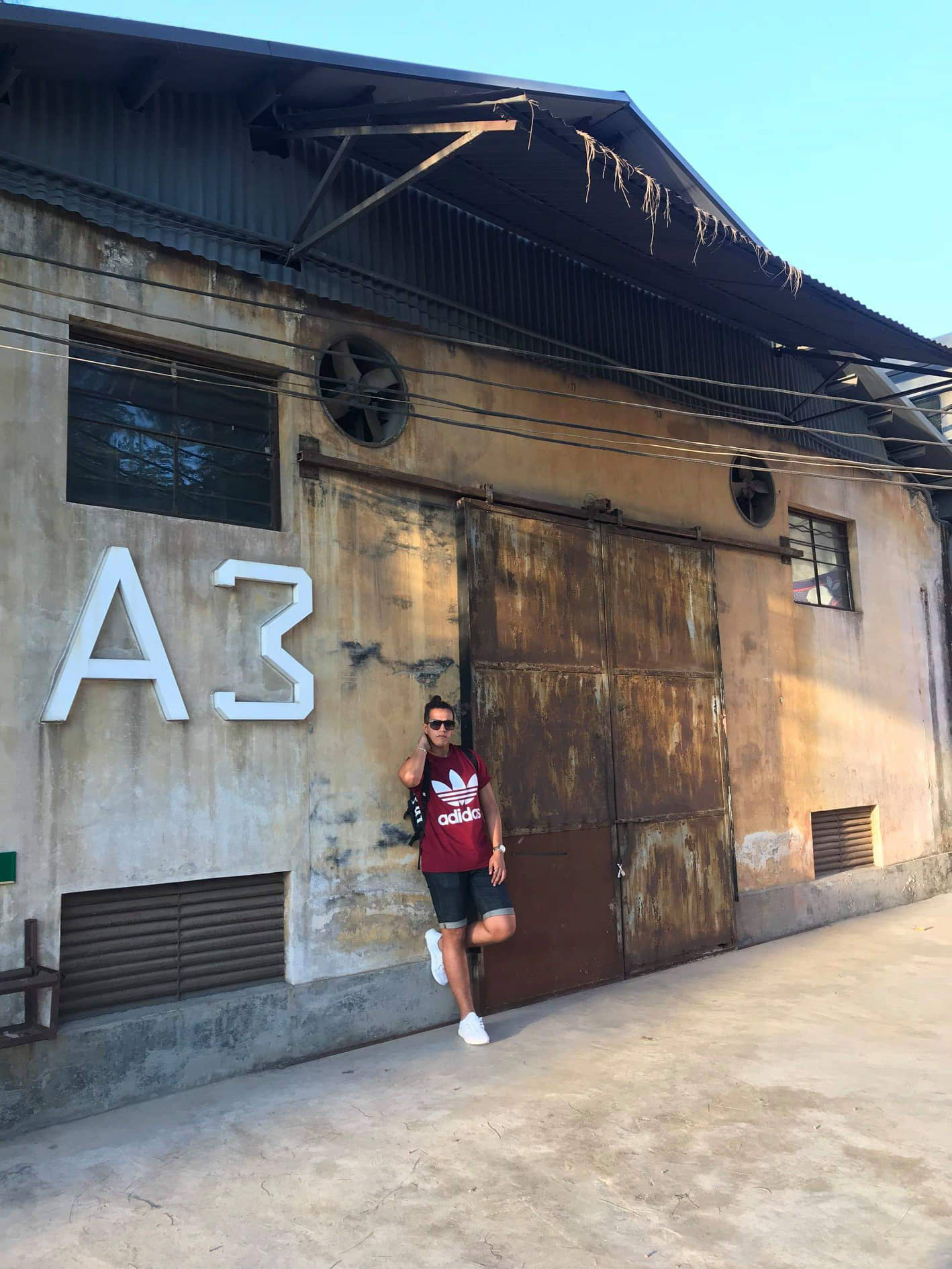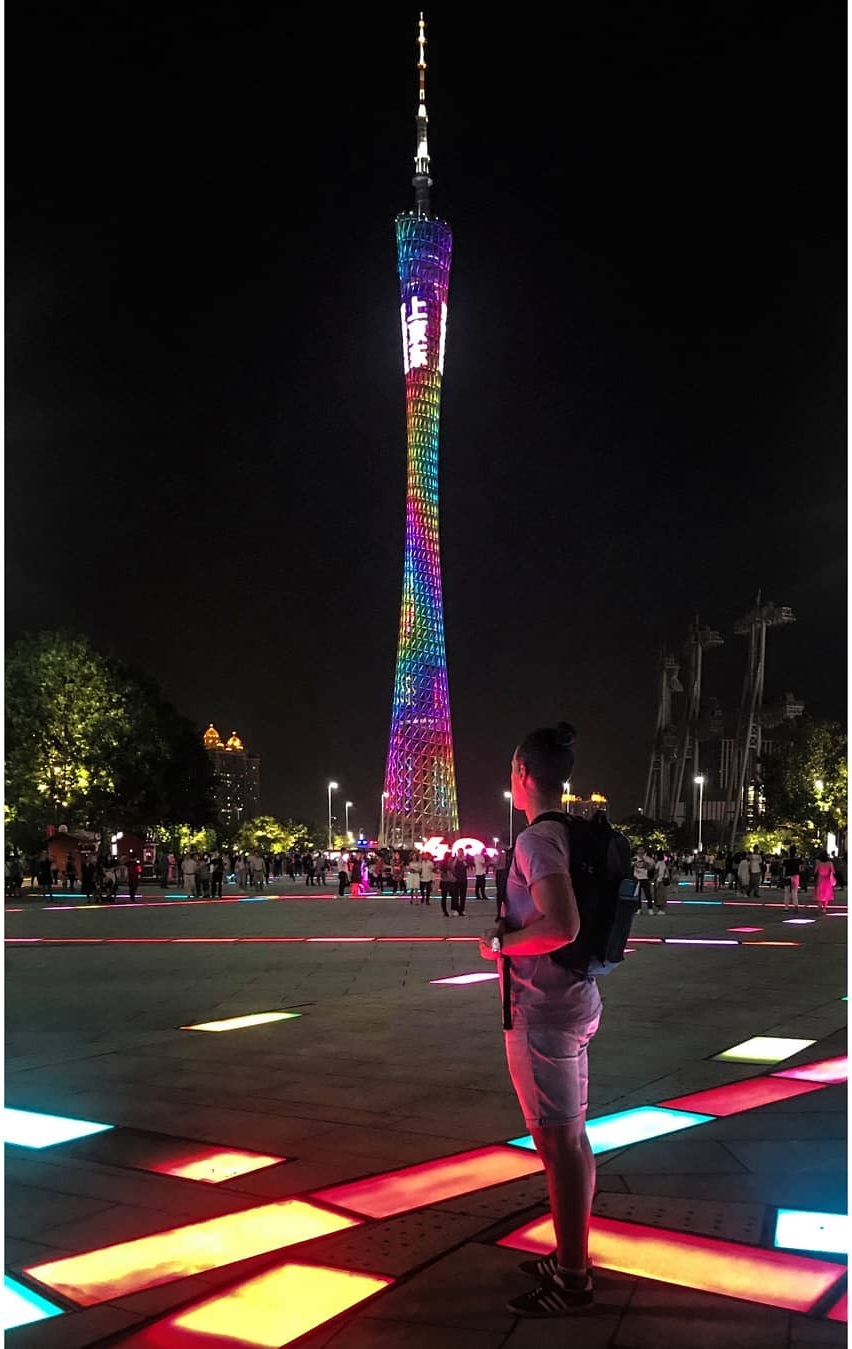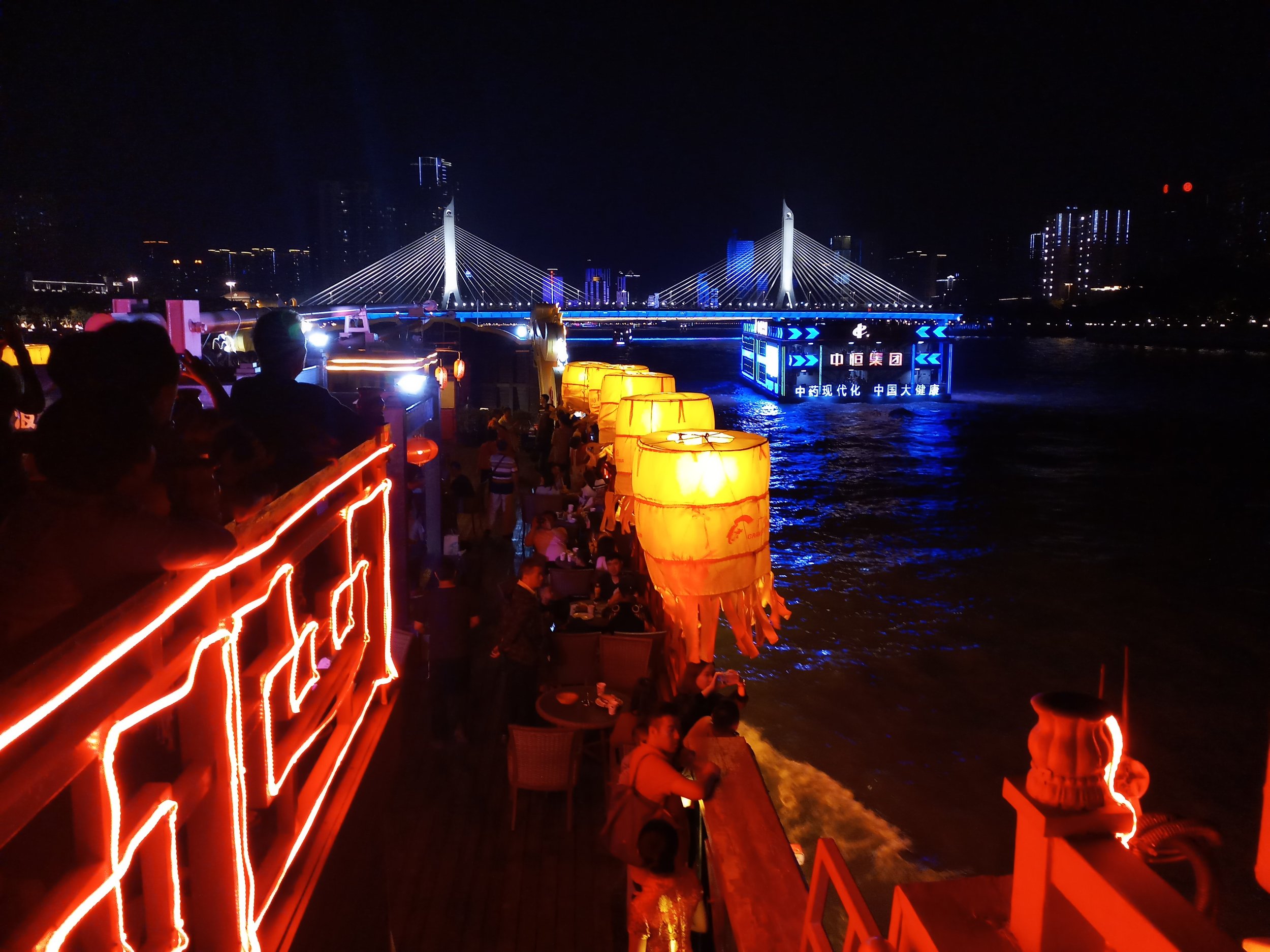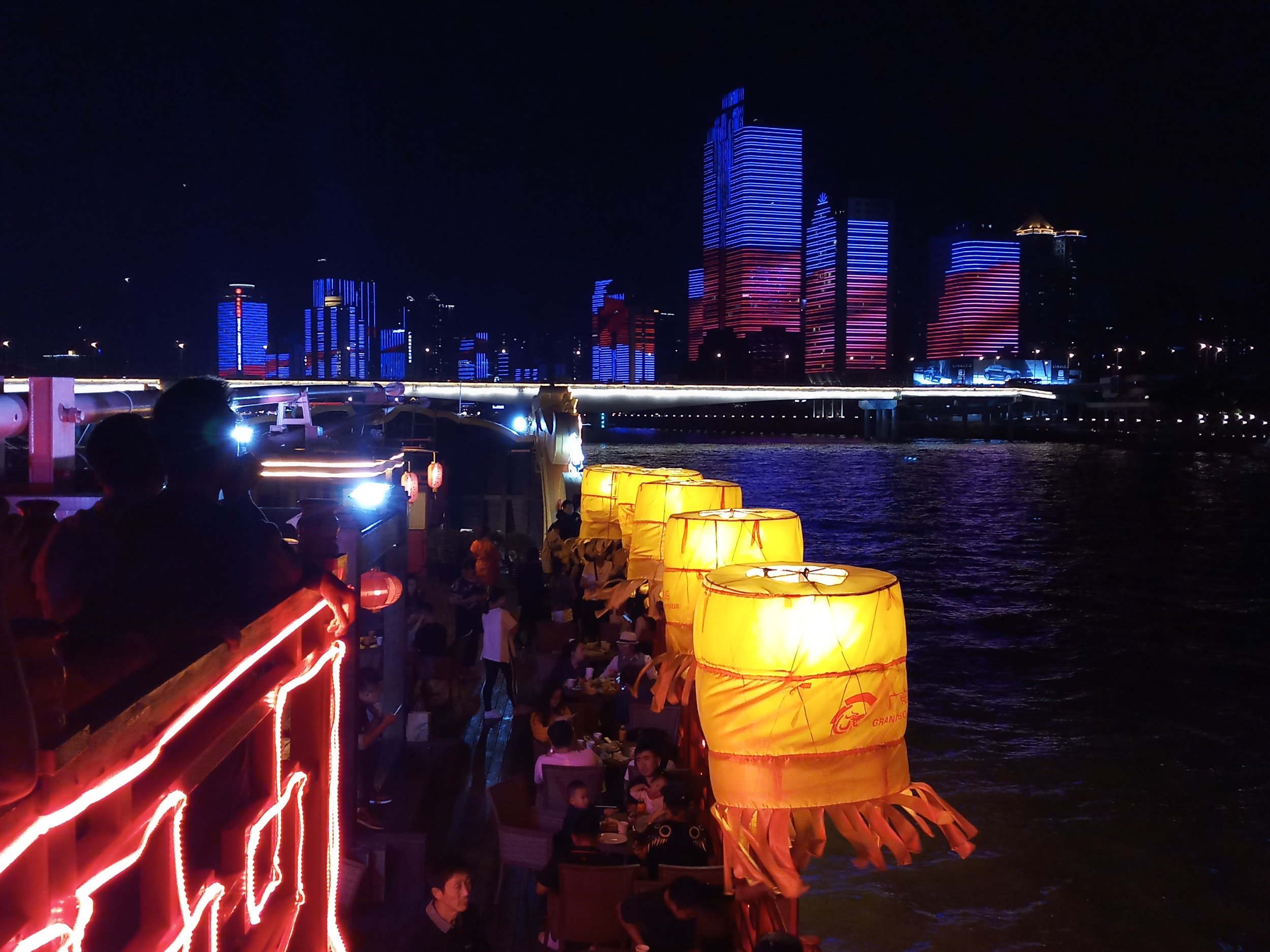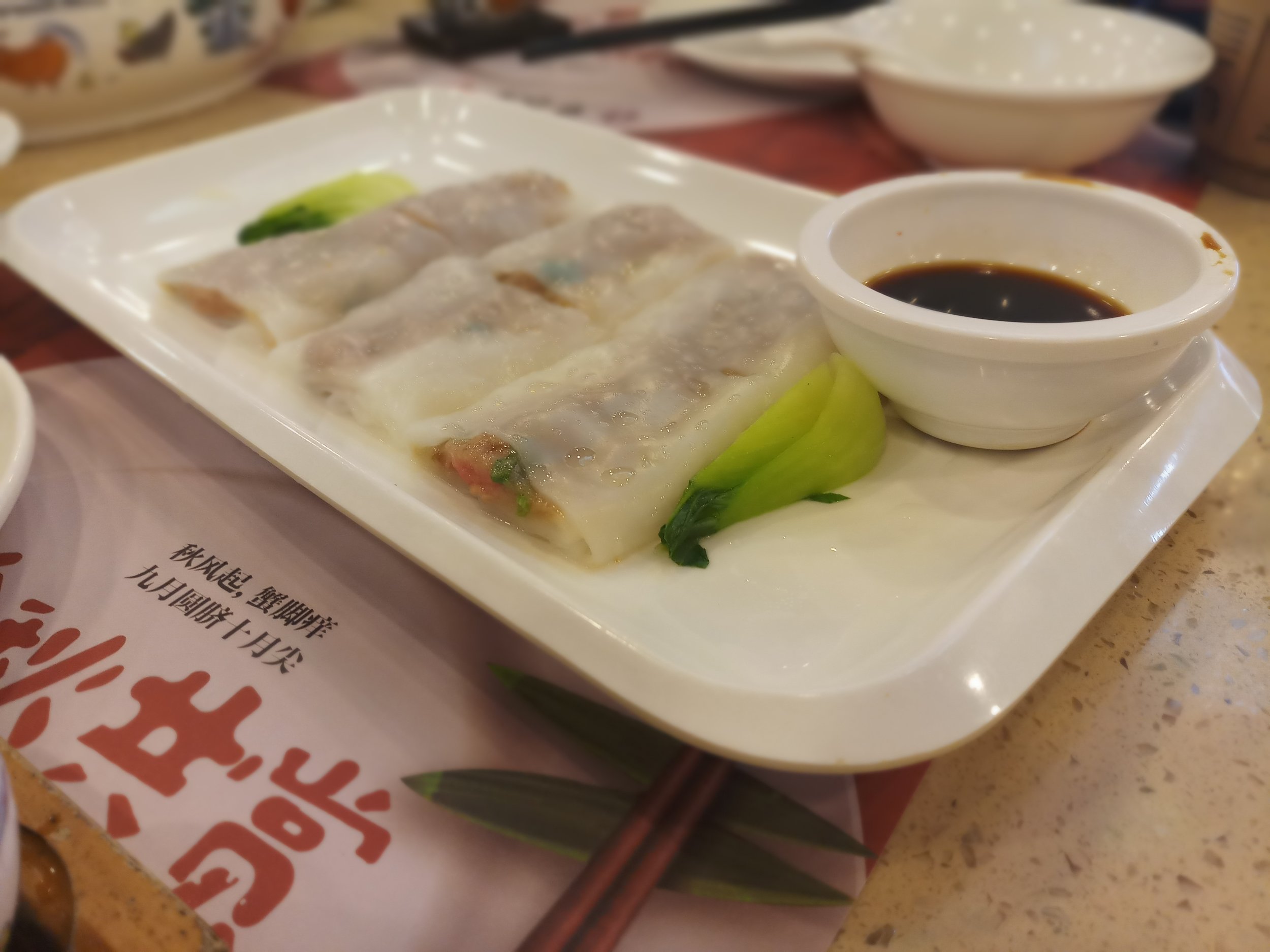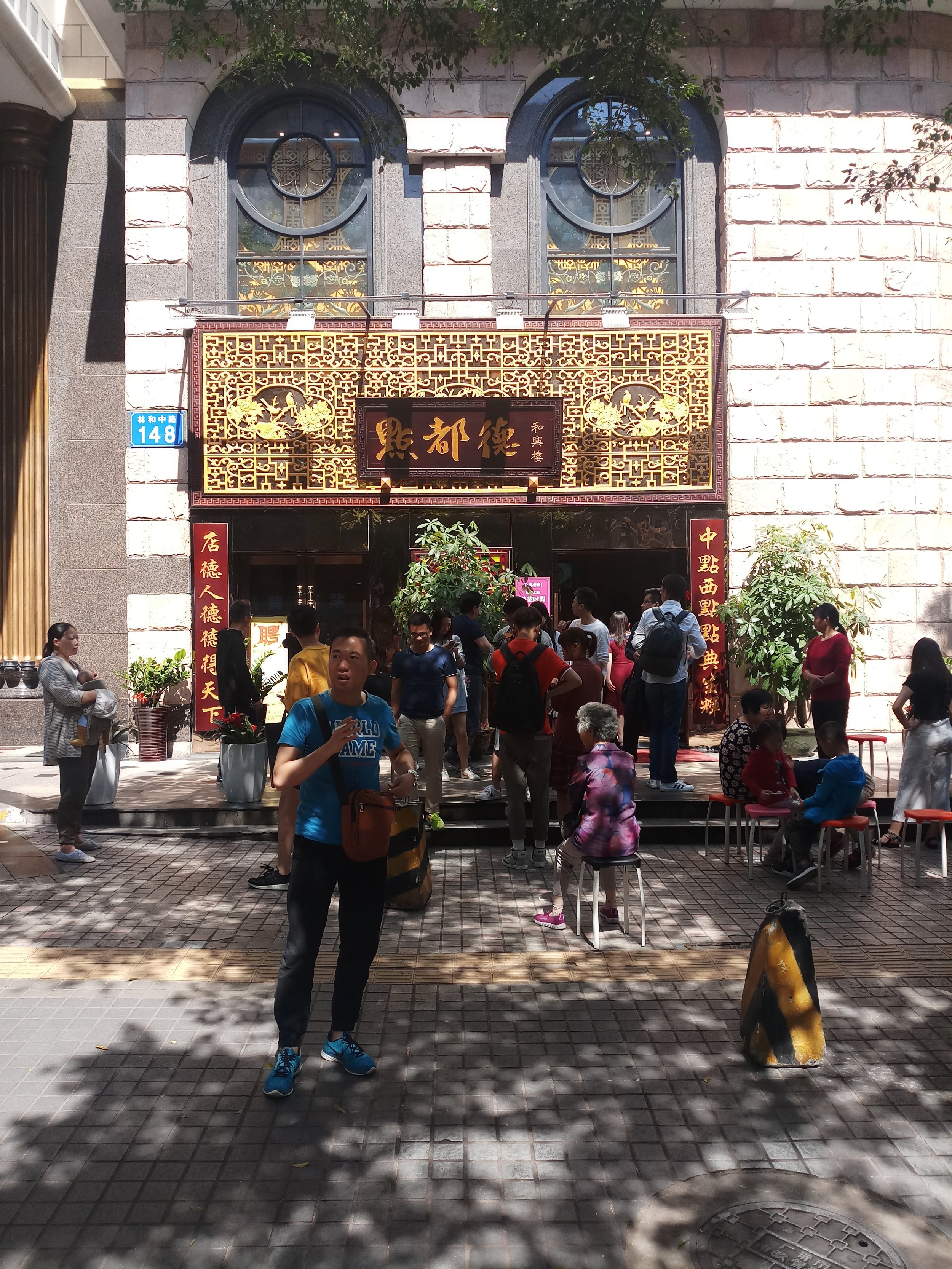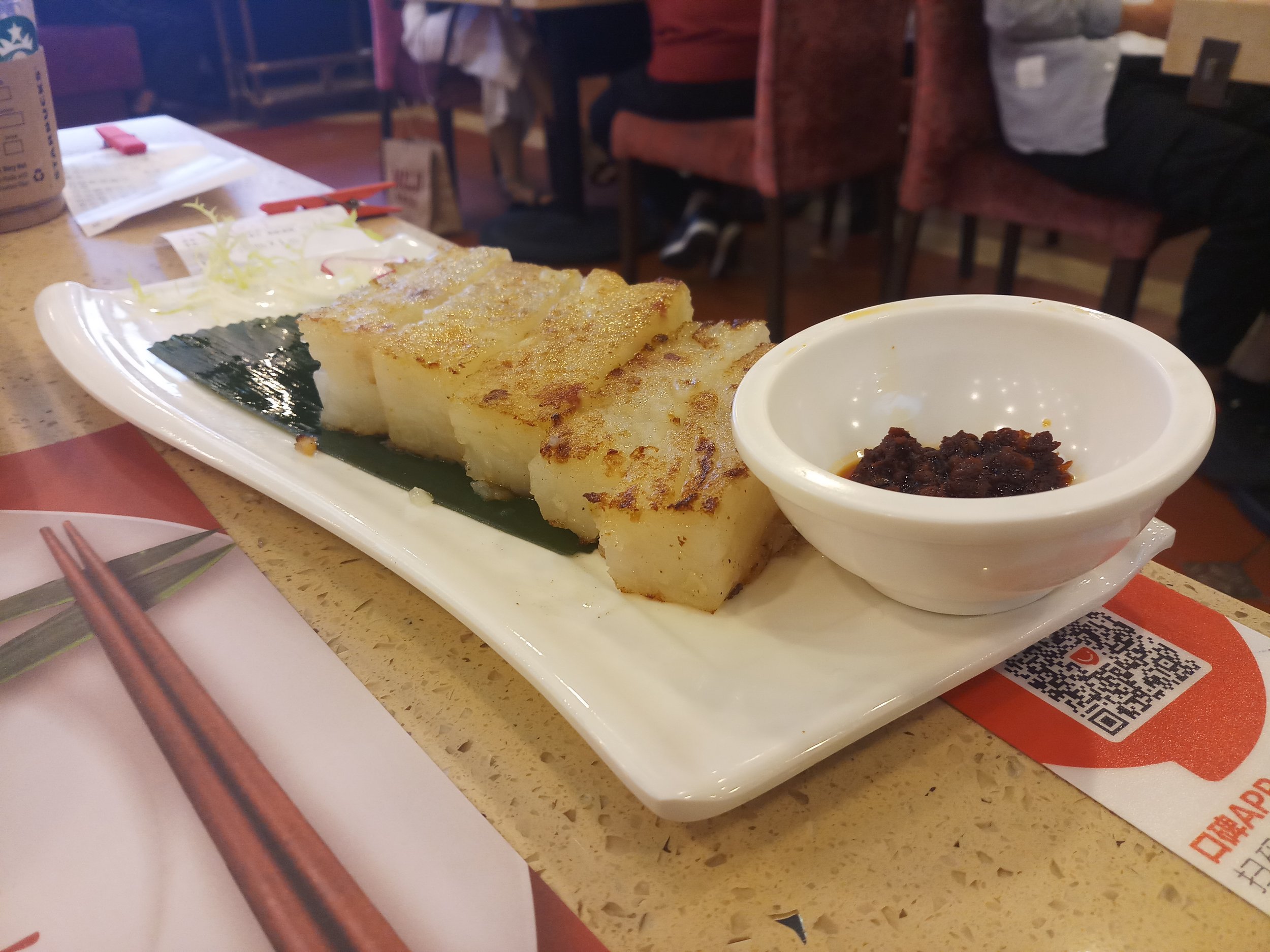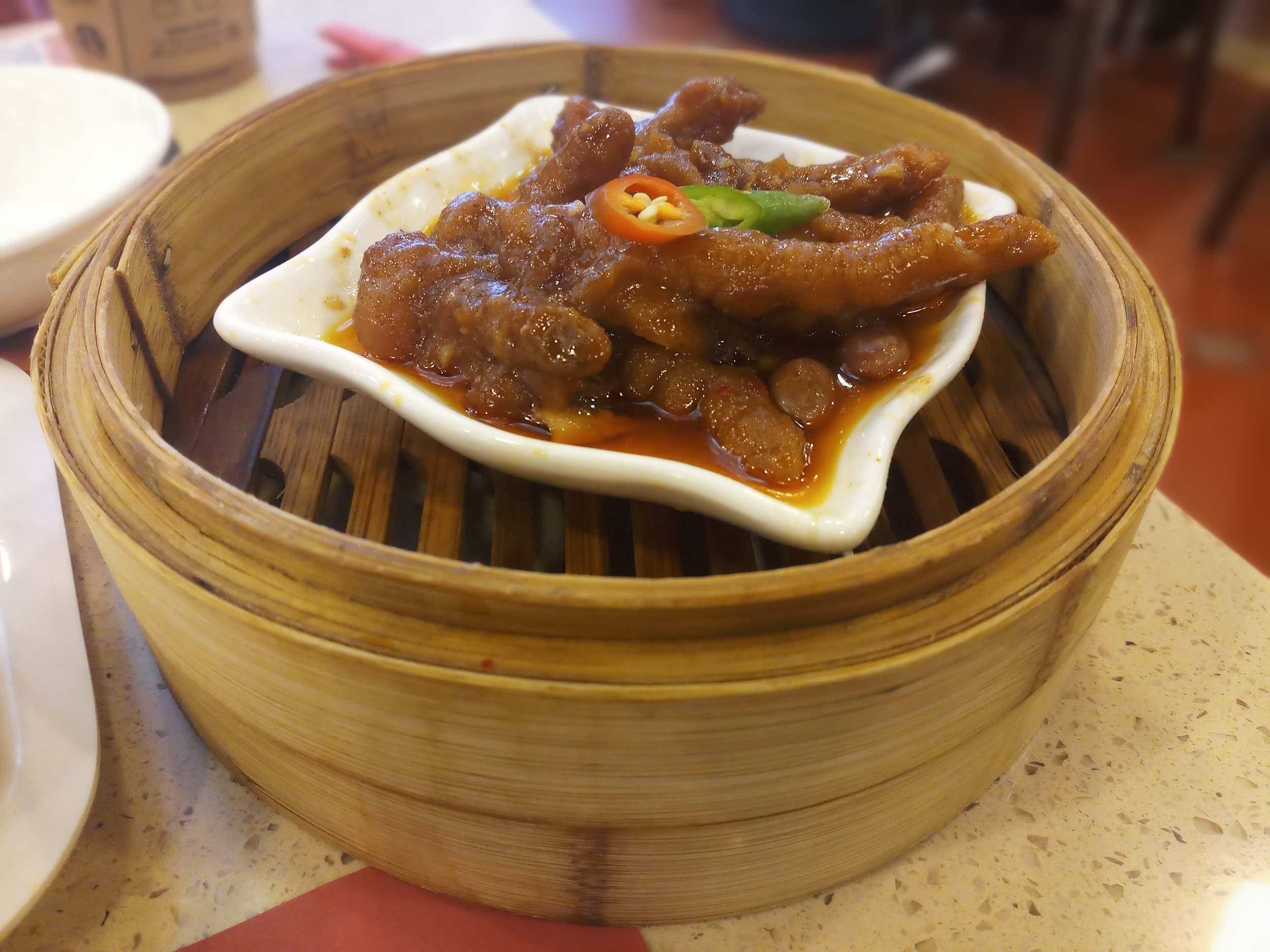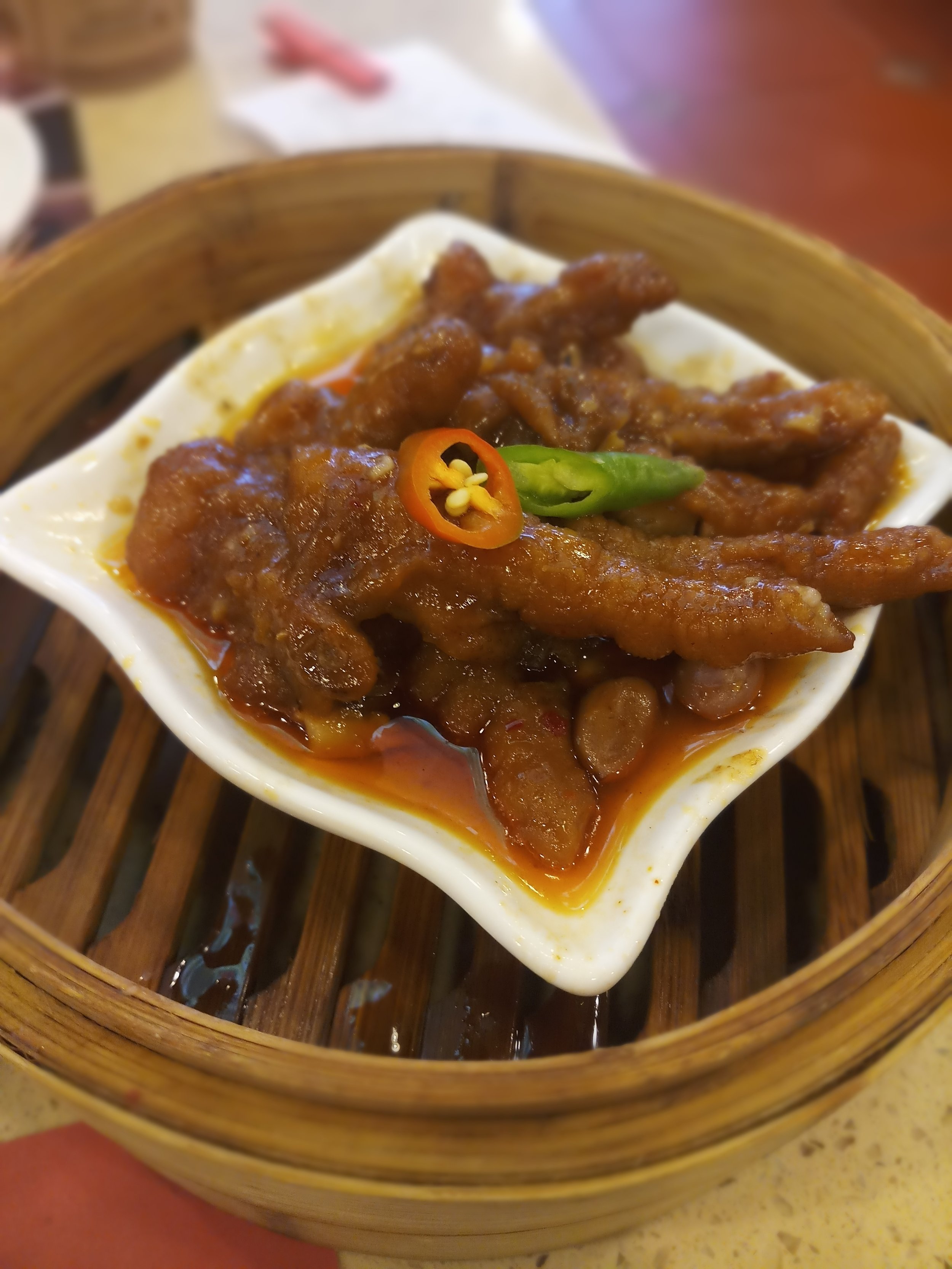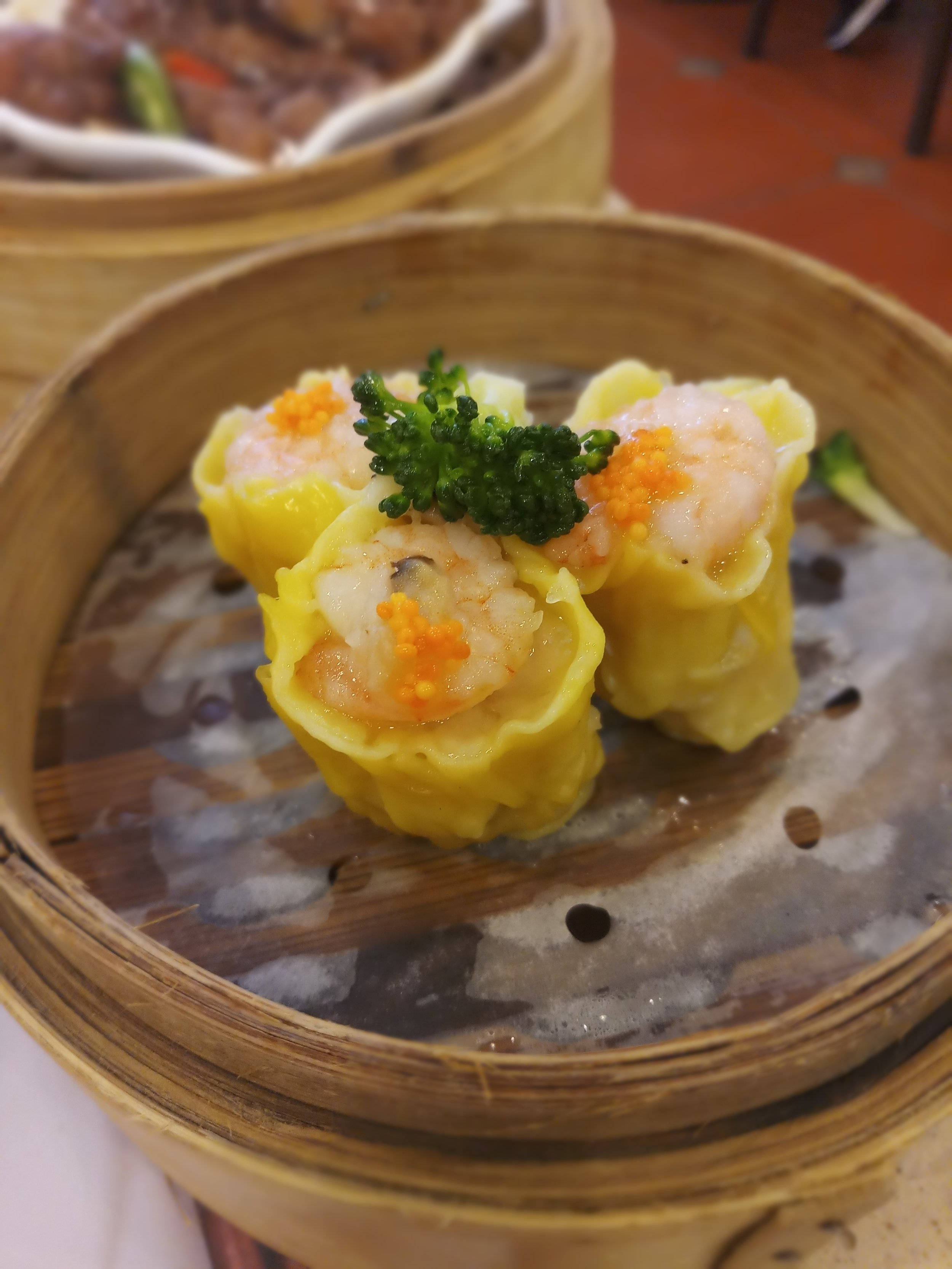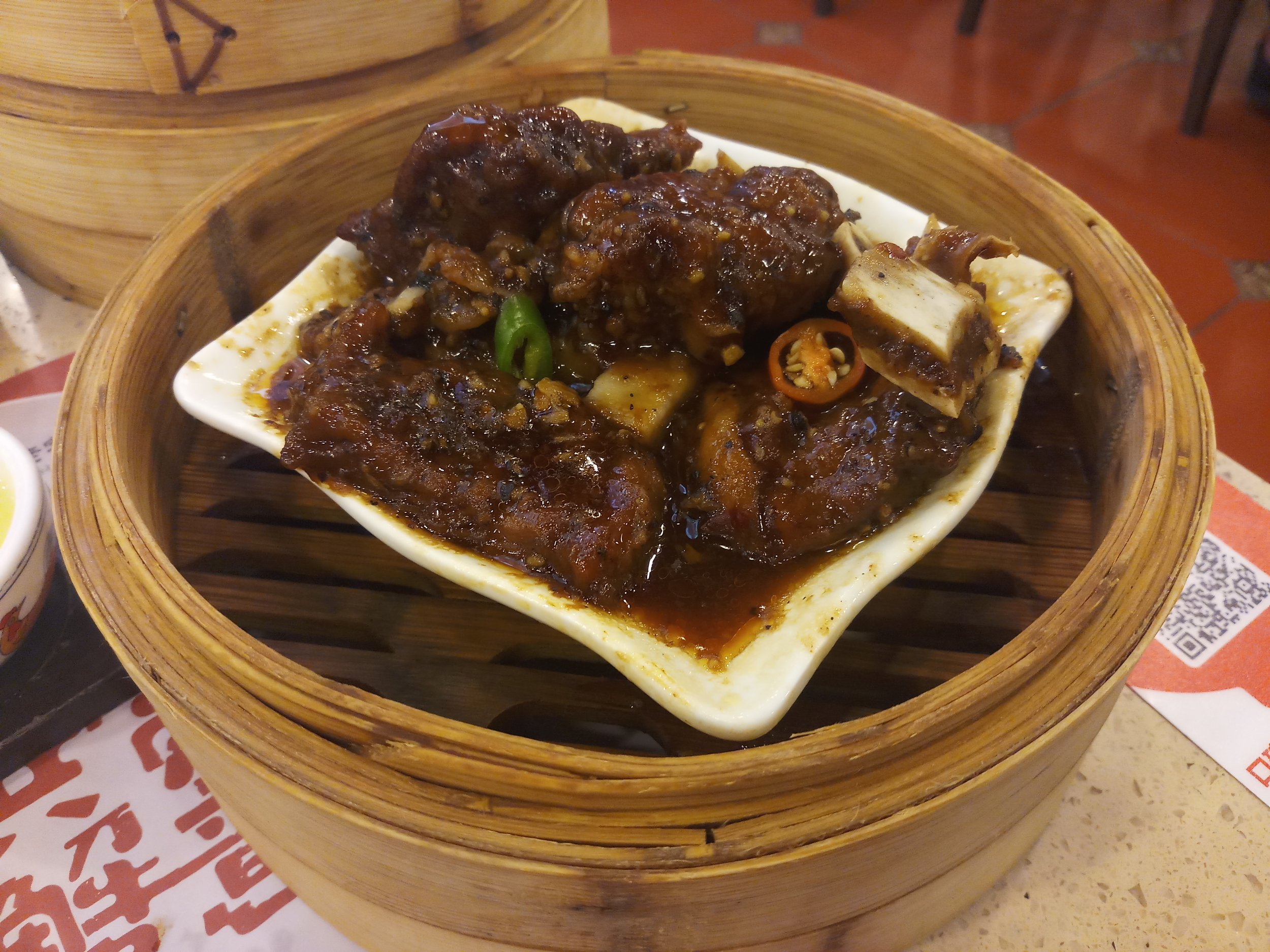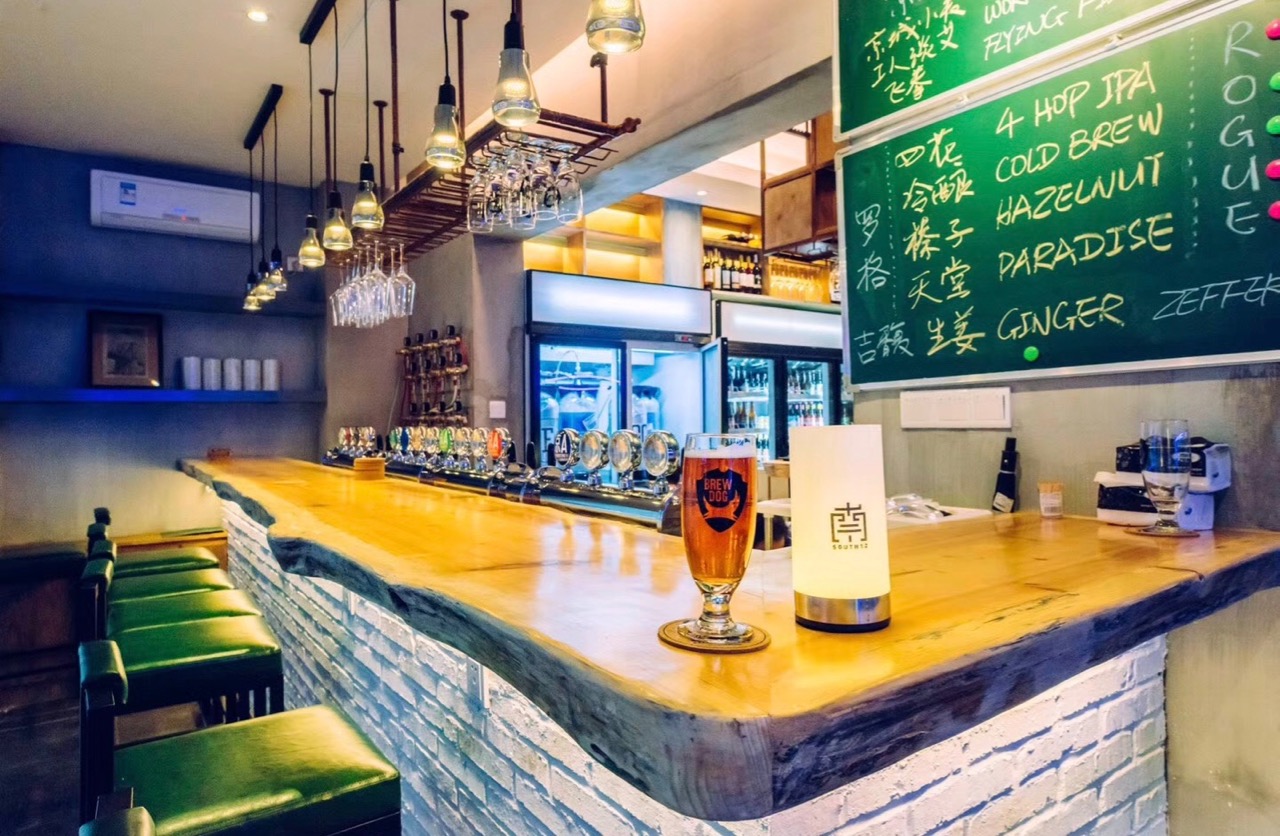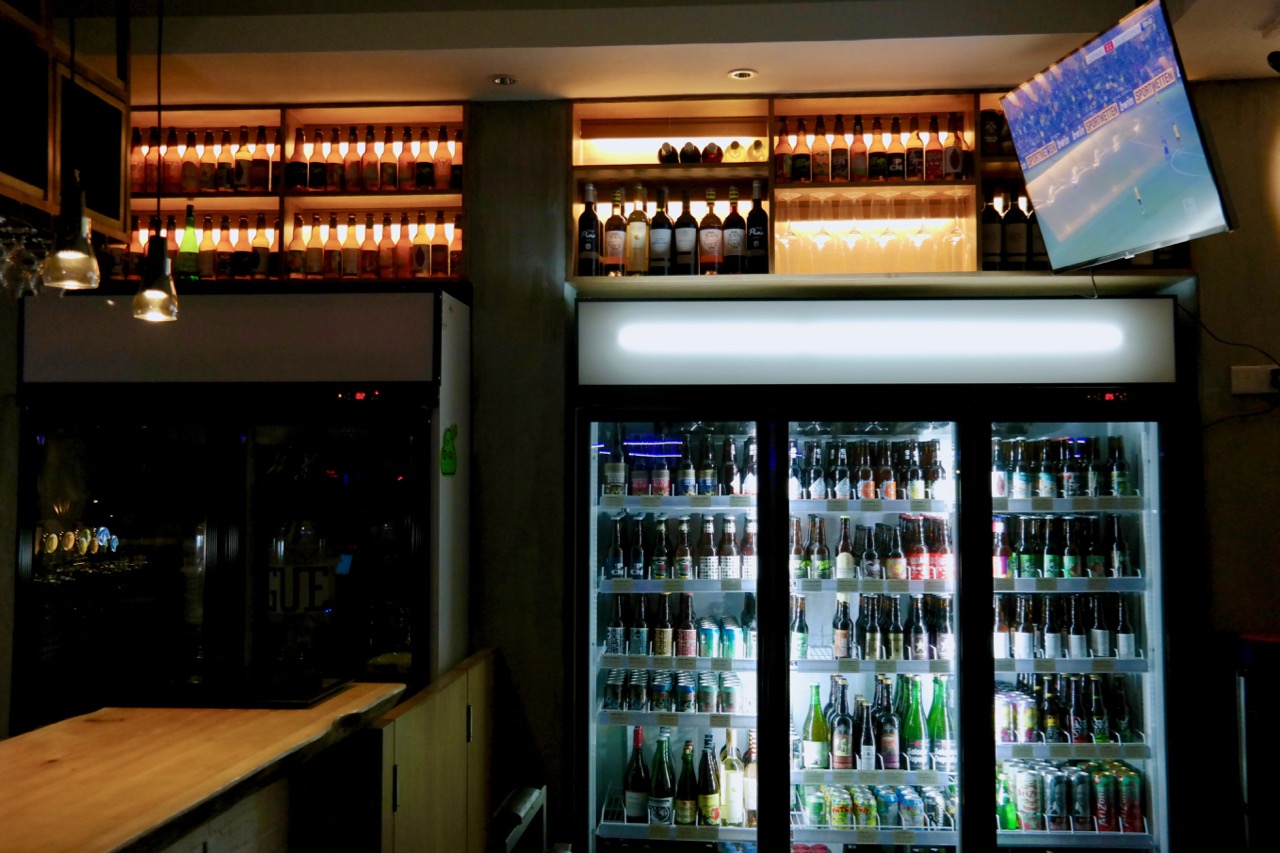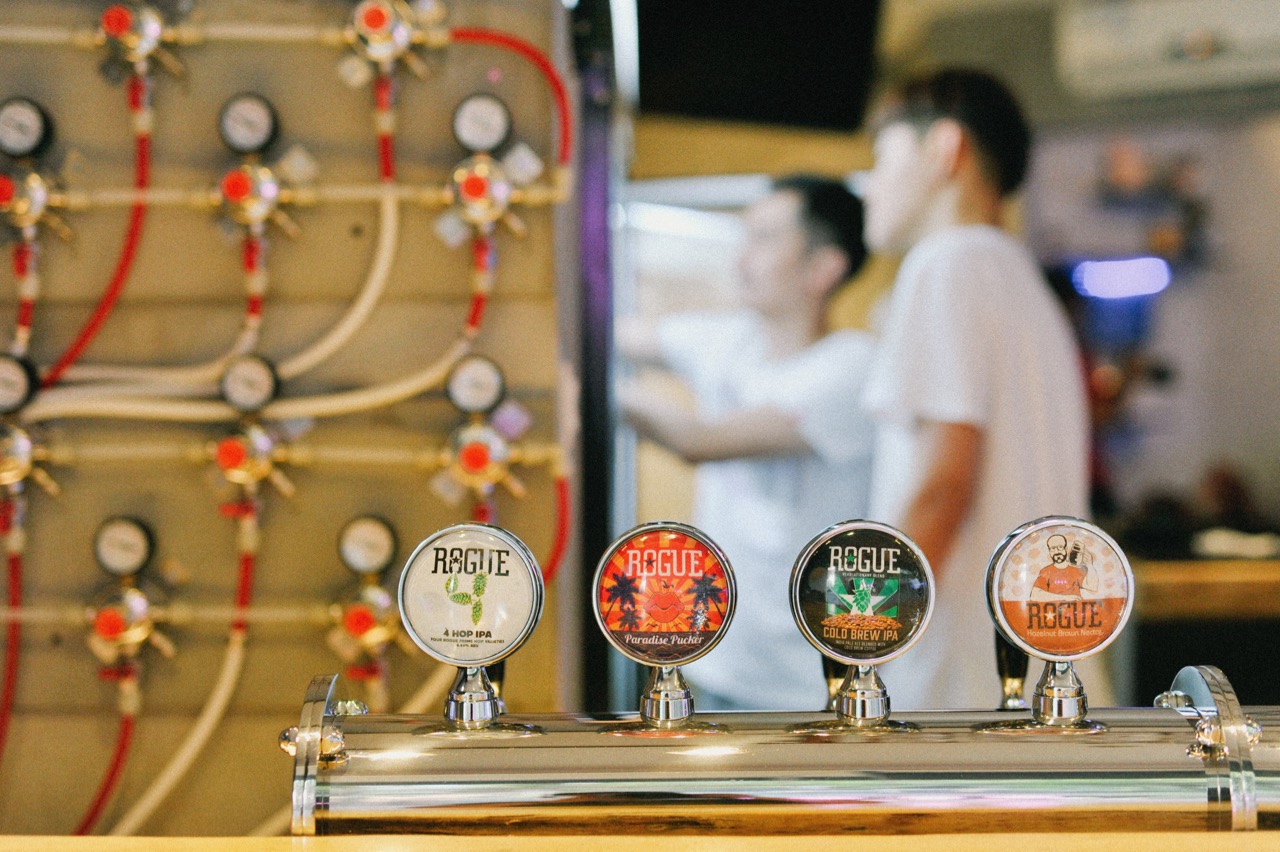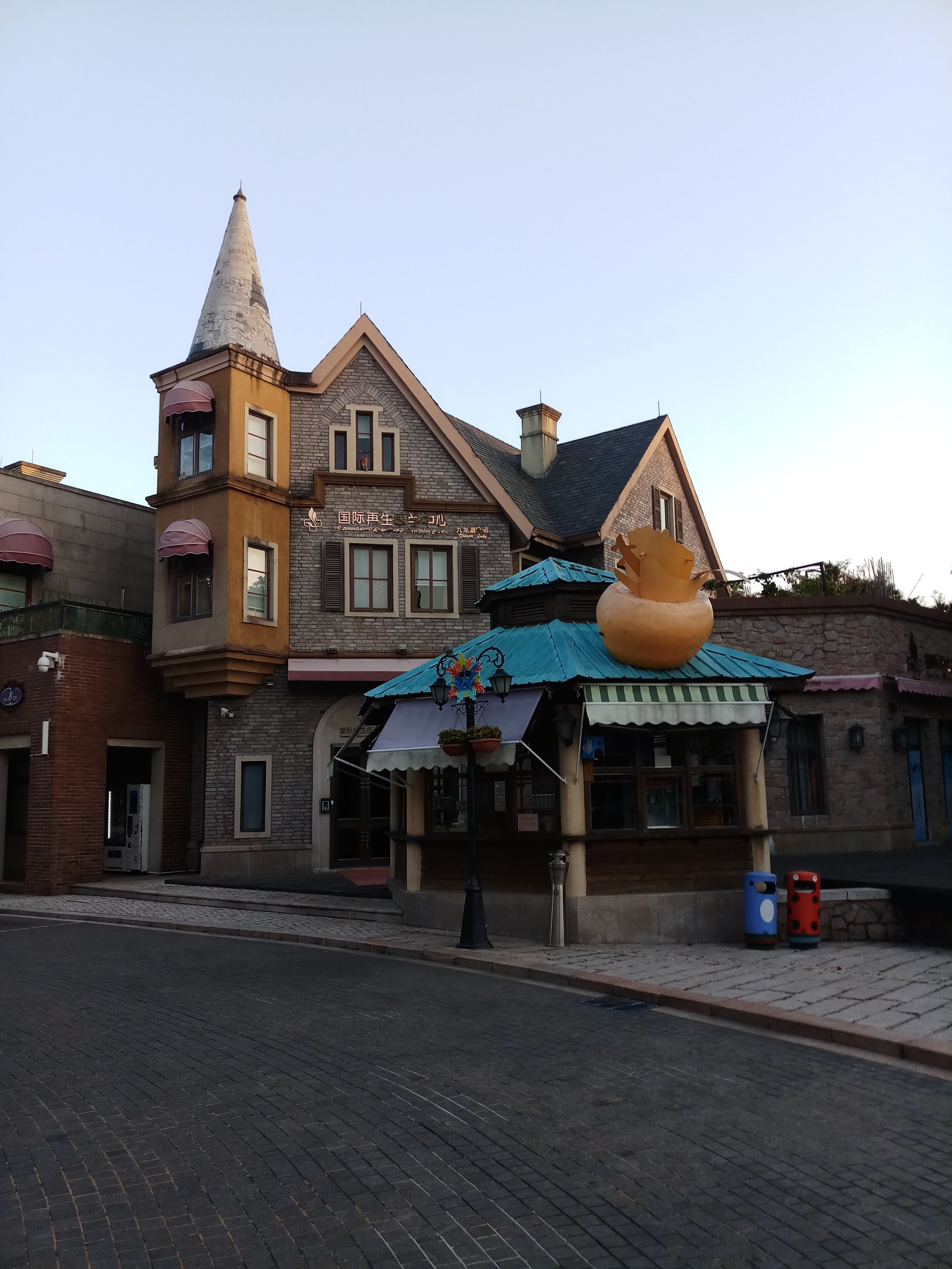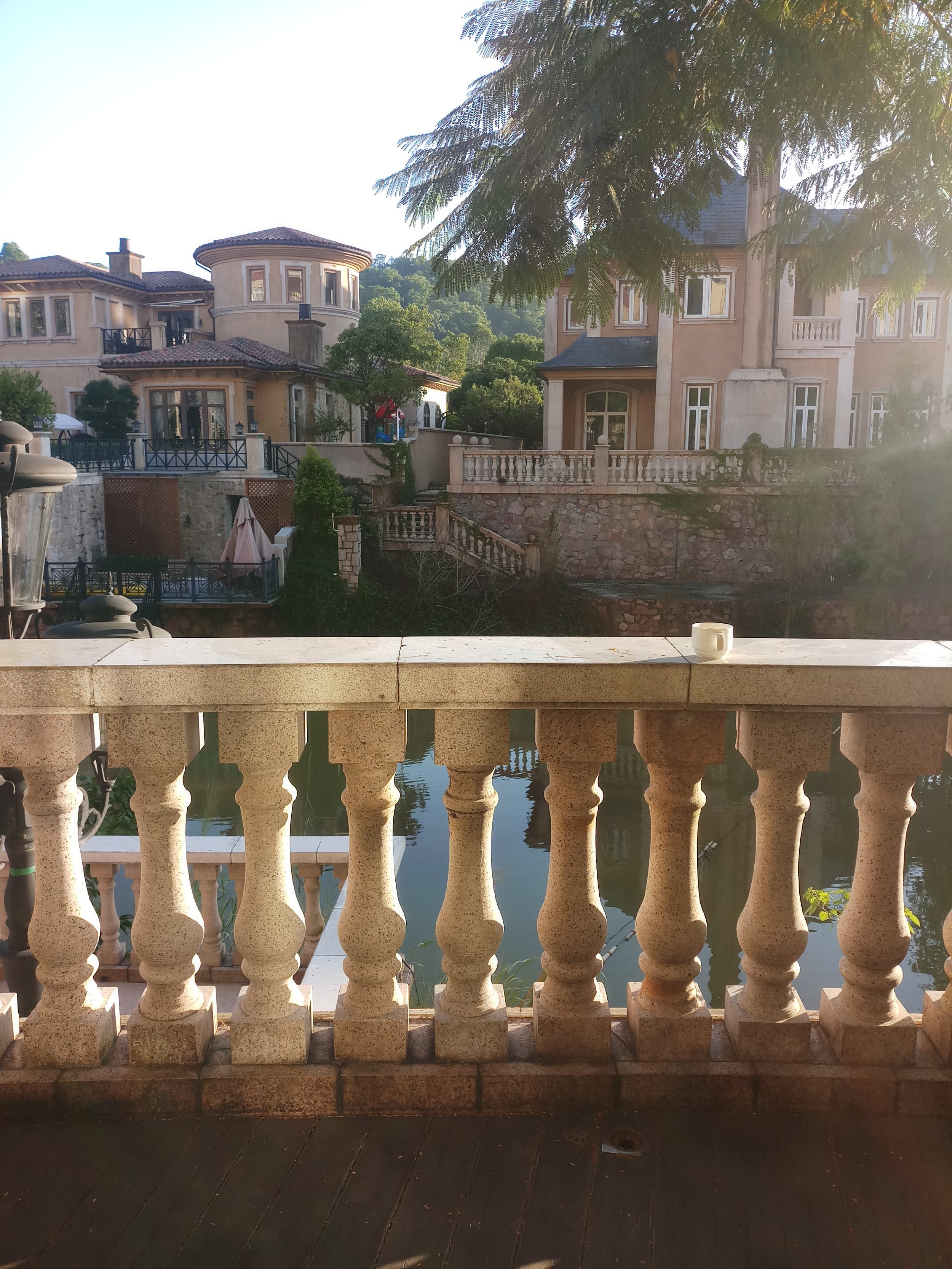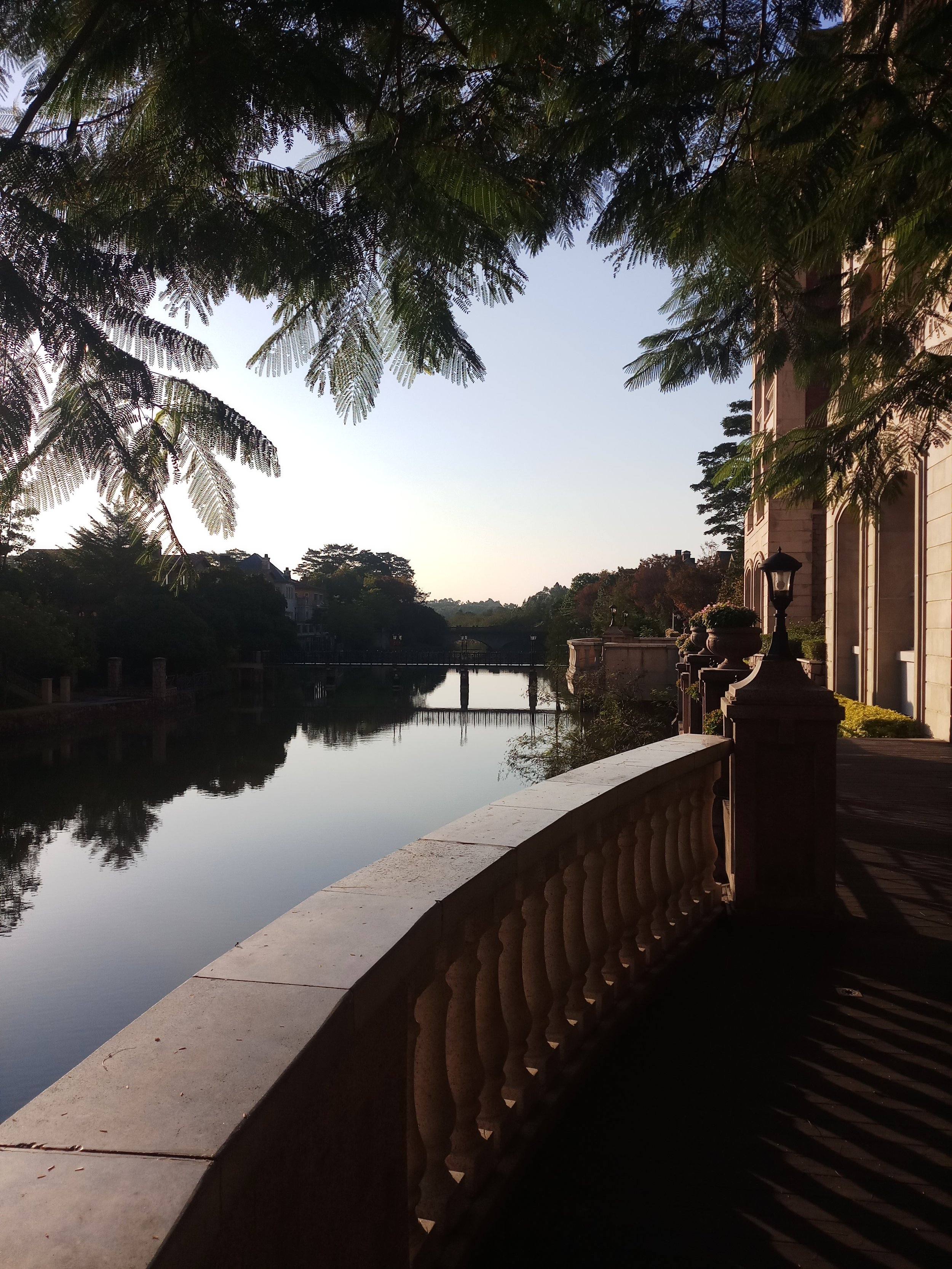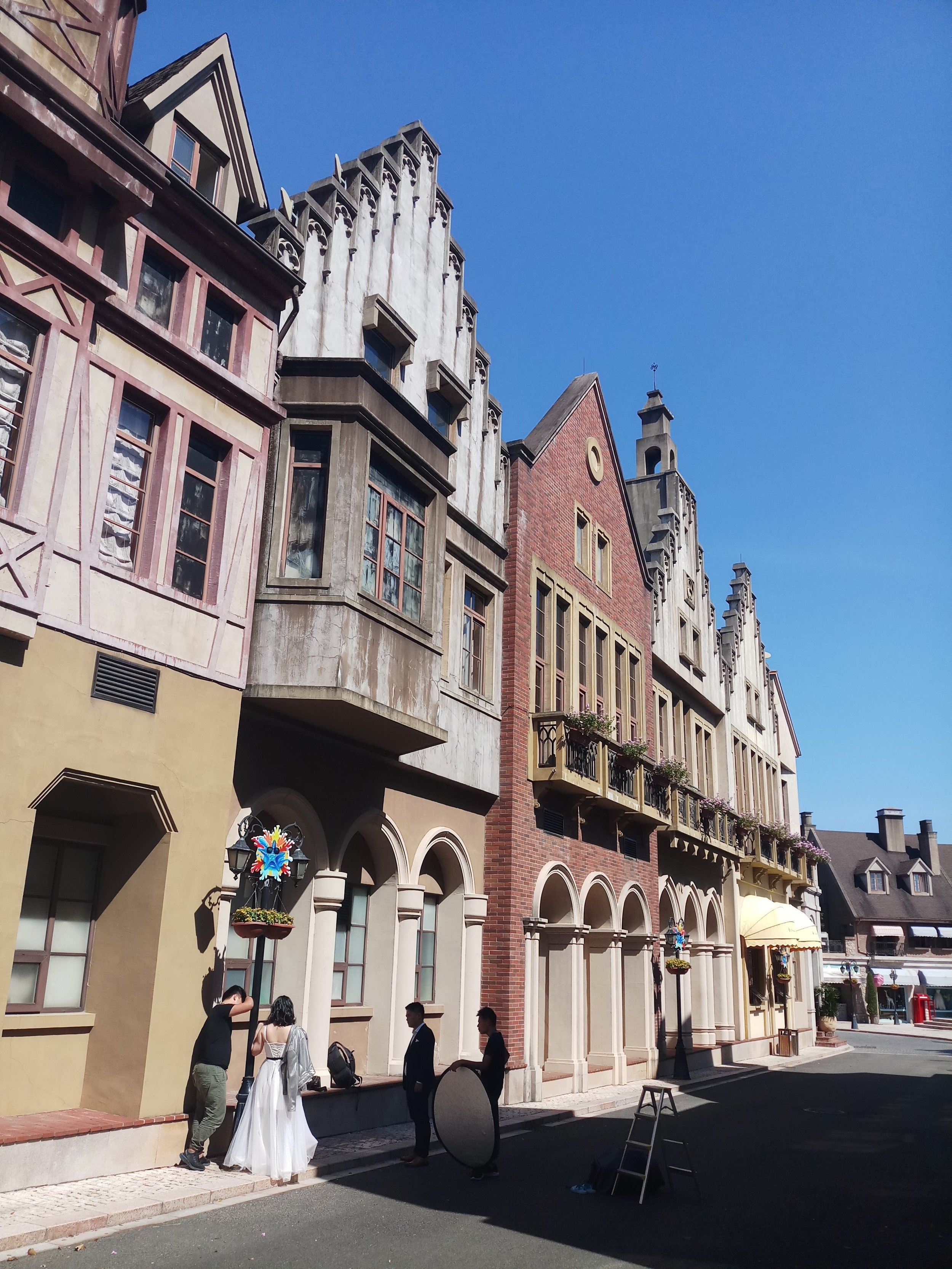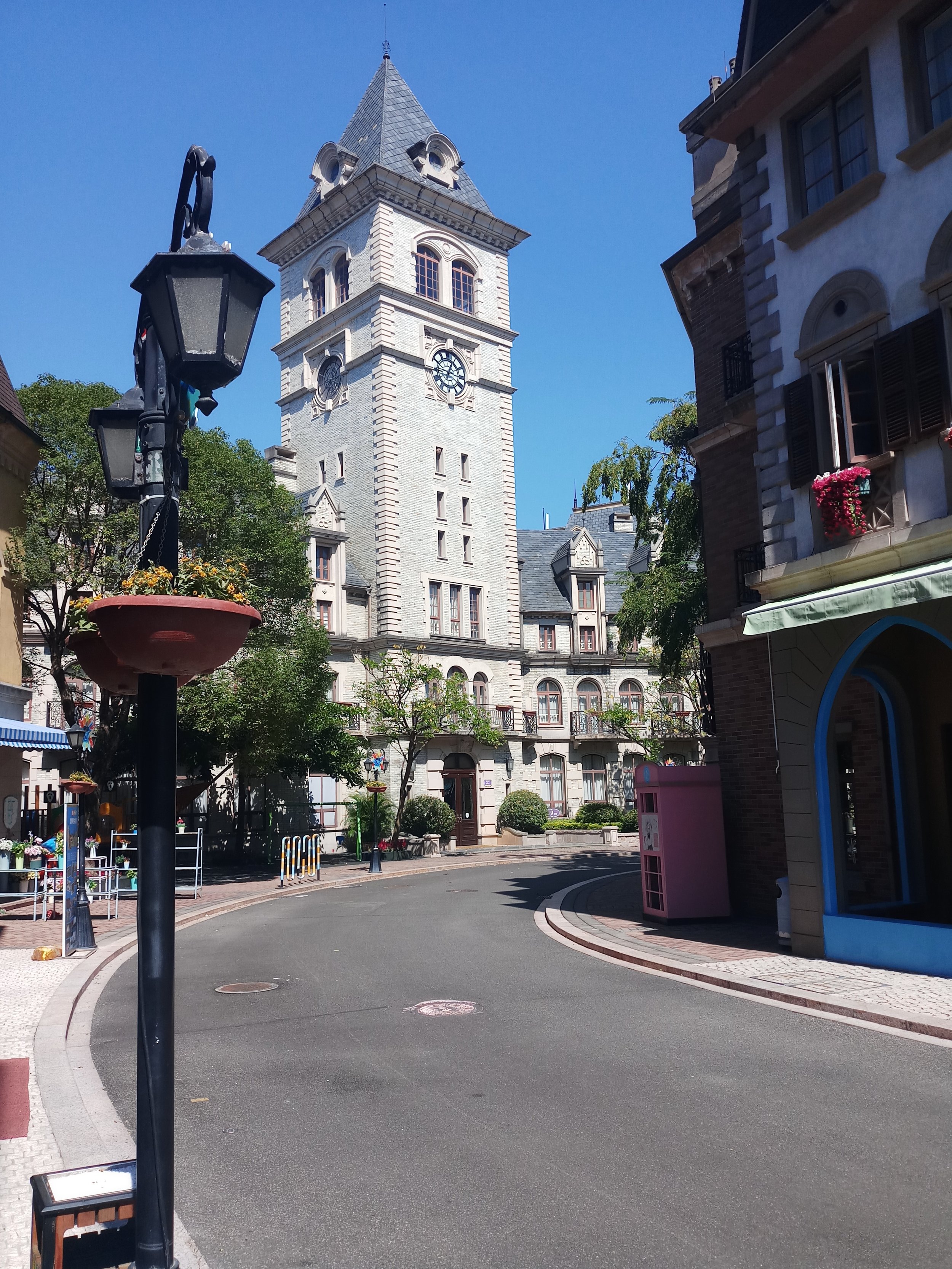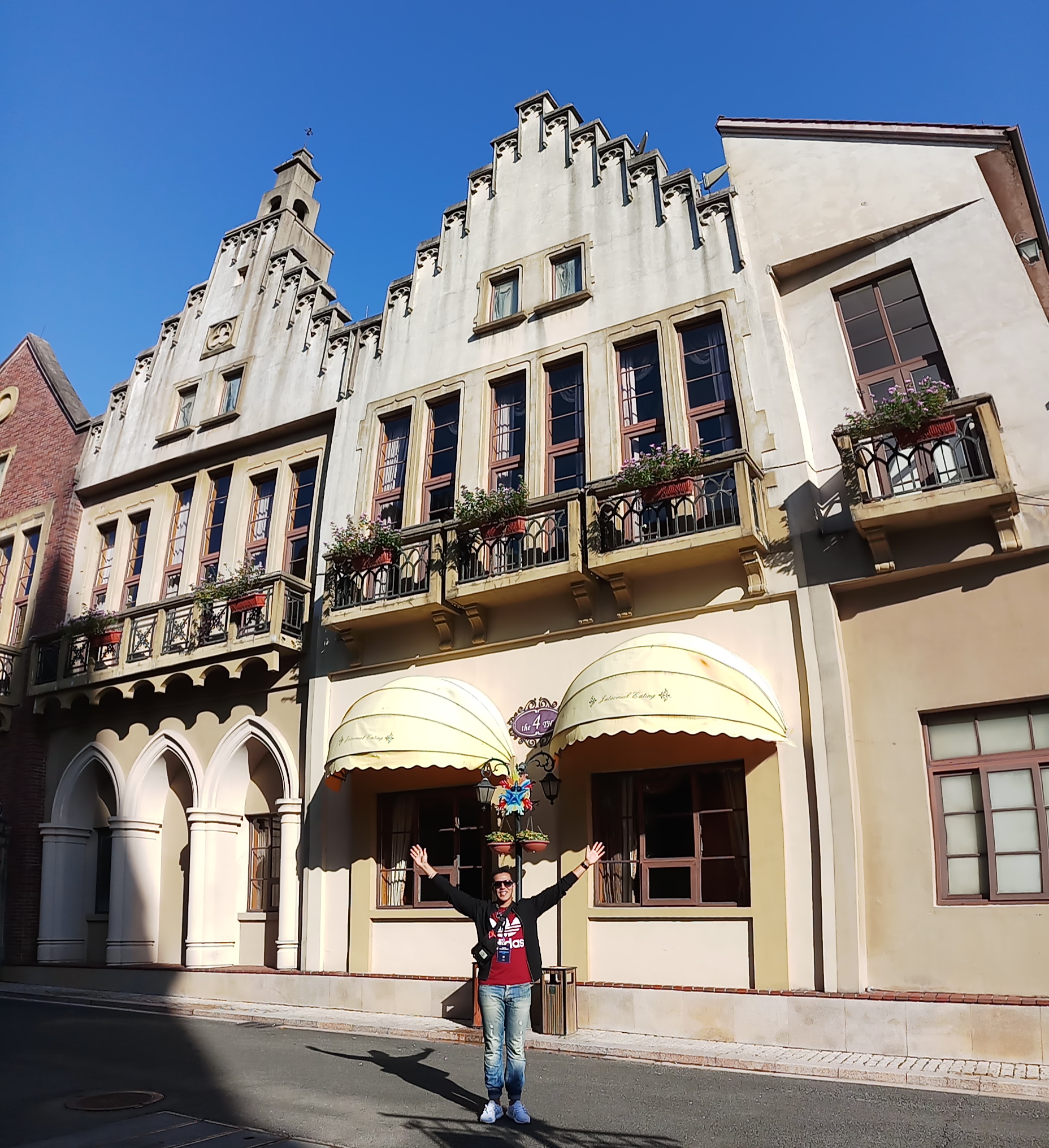GUANGZHOU: TRADITIONAL MODERNISM
I flew to Guangzhou for a week-long of meetings for the 2018 Product Creation Technologies Summit. As usual, I decided to extend my stay over the weekend to explore China a bit further (as if I hadn't explored it enough already, but it's such a vast country!). Only this time, I have decided to stay in Guangzhou and see what the Cantonese megalopolis has to offer. Believe it or not, despite countless business trips there, I have never paid Guangzhou the proper visit it deserved. On a Friday morning, I went to the airport to catch the Vietnam Airlines 10:30am flight. The deceiving part about flying from HCMC to Guangzhou is that even by waking up early, I always land at 2:30pm, and reach the hotel at 3:30pm local time (HCMC is on GMT+6, and Guangzhou on GMT+7). So despite an early flight, it's still a full day of commute. Other options would be to fly on one of the Chinese carriers. For having experienced the customer service on both sides of the South China Sea, I guess I'll bite the bullet and stick to Vietnam Airlines. First World Problems, I agree...
Dinner with colleagues
For me, coming back to China is always an opportunity to catch up with the colleagues I had the pleasure to work with in 2017, and I would definitely do that on the following Monday. But, it's Friday night and my full day of commute really got my appetite working. Wanwan, a friend I had the chance to travel with in China at different occasions (to Yangshuo and Beijing), invited me to join her colleagues to dinner at a restaurant nearby my hotel. Now when did I ever refuse free food (or free “anything” for that matter…)? Typically, Chinese dinners take place in a private room of an expensive restaurant, and involve delicious food, wine and lots of "ganbei". This dinner was no exception. Countless bottles of wine accompanied with a series of cheers directed toward the guest of honor (yours truly, as per the tradition) were enough to send me straight to bed right after dinner.
Dongshankou
Dongshankou is an area in the Yuexiu District of Guangzhou. It used to be known as the city’s residential suburb before it expanded. Nowadays, the peaceful and elegant environment of Dongshankou attracts many visitors and photographers, and that’s exactly what we witnessed during our visit. We wandered around the neighborhood and crossed paths with many young and hip aspiring insta-models (or WeChat Memories enthusiasts). As for us, we enjoyed the relaxing and artistic life in Dongshankou, and experience its history and culture through the old buildings with red bricks and white porches. Stepping into the renovated historical mansions, we discovered upscale bars, cafés, restaurants, art galleries, and craft shops. Wanwan was on her phone trying to find some cool street art to take pictures with. Even after walking around from one backstreet to another for hours, we never managed to find any of the street arts we were interested in. Although, we did enjoy a nice corn and green tea-flavored ice cream in the nearby Dongshankou Park. A beautiful sunset on the Dongshan Lake, with groups from the golden age practicing tai-chi, and odd flavors of ice cream… Those are the weird things that make China so special, but there is definitely something interesting to it.
Shamian Island
This hidden jewel for photography aficionados consists of a whole neighborhood that was once conceded by the Chinese government to the French and the British during the Opium Wars. In 1859, Great Britain and France dug an artificial river (now called Shajichong) to the north, completing the loop with the Pearl River to the south and therefore making it an island. Since then, Shamian became a strategic point for city defense and a beautiful nursery for artsy pictures that will make your Instagram account go wild.
The whole island is so charming with its tranquil historical reminders of the colonial European period. Quiet pedestrian avenues flanked by trees and lined by buildings of European-style architecture… what’s not to like? Evidently, we were not the only ones to know about this photography spot. Although, not so many foreigners were there, as if none of the tourists knew about this place. Actually, this latter statement makes a lot of sense. Travelling through China is not exactly easy for a foreigner. Most information you can find is exclusively in Chinese and the most useful websites don’t have an English version. With more than one billion population, China is more than self-sufficient when it comes to tourism. Therefore, companies don’t feel the need to go the extra mile and translate their documentation for such a small percentage of their market. Add to that a digital firewall that blocks the Google search engine, Facebook, Instagram, and other common websites in the Western World, you really have to be creative to find the landmarks and hot spots in such a large city. It’s like going back to the yesteryear. Sometimes, I wonder how the past generations used to prepare their trips.
Beijing LU PEDESTRIAN STREET
Beijing Lu Pedestrian Street is the the main shopping thoroughfare, a commercial pedestrian street with boutiques on both sides of it. If you are looking for something, chances are you will find it there: cheap clothes, street food and even a little history. Personally, I enjoy this street for the abundance of street food it offers. Going from one end of the street to the other, you will find countless stalls and “holes in a wall” kitchen counters (as I like to call them). On Saturday night, Wanwan and I went there and enjoyed an assortment of local treats going from black fermented tofu to Cantonese-style shrimp dumplings. We walked up and down the street while simultaneously observing the archaeological display of the original road (from the Song Dynasty (960 – 1279 A.D), showing that this road has existed for nearly a thousand years) and dodging the very annoying people trying to sell fake luxury brand watches and bags. For some reason, of all people in the streets, they always came to me directly. There must be some sort of stereotype linked to my complexion and buying fake luxury brands. Who knows? I know…
Along with boutique shops and brand name retail outlets, there are also several ingeniously re-branded shops offering the perfect knock-off of your favorite brands. Funny story about this is that those re-branded shops are now legit and fear no retaliation whatsoever. Indeed, some of those fake brands were brought to court by the big brands of this world… and lost! If you want to know more about this, check out the following cases:
Redtory
When I visited Beijing, I was very pleased with my afternoon at the 798 Art Zone. This time around, while in Guangzhou, I was even more pleased to learn that a similar decommissioned industrial park was also transformed into a creative hub. It’s a real urban development phenomenon that a city expands so much that it surrounds old industrial zones and forces them to stop their activities because they are now too close to the population. Based on my previous experience, I had to go check it out. Once again, I was not left disappointed. From some cool buildings, to rusty machinery, arts and crafts market, and art galleries, we wondered around playing it artsy for a few hours until the sunset. Then, it wasn’t really possible to snap some cool photos, so we left the premise to the boat trip.
Canton Tower
The most recognizable landmark in Guangzhou is probably the Canton Tower. You might have seen it before, but just didn’t know it was a Cantonese emblem. It erects over the Zhujian New Town, the city’s beautiful and trendy financial district that was nothing but a swamp 10 years ago. On a Sunday evening, Wanwan and I went by the Canton Tower to try and catch a cruise along the Pearl River. If you fancy such an activity, a few things must be known before going.
How to book a cruise on the Pearl River? Most of the cruise companies have a booth located at the foot of the tower. Therefore, no need to book anything in advance. As long as you stop by that booth a few hours before the departure, you will be fine.
Which section to book? The boats are segmented into different sections with different pricing. This segmentation might not make sense to a westerner. In our case, the three choices were 1) in the cabin; 2) on the deck, and; 3) in the VIP section. The seats are dedicated, so make sure you book a good one.
Are tours offered in English? The whole tour was narrated in Mandarin only. Luckily, I had a local accompanying me during this cruise. Otherwise, I would have been as clueless as a pirate with two eye patches.
We knew we preferred to be outside to be able to actually see something. Then, it was a question of whether we would prefer to be on the deck or in the VIP section, knowing that they were both outdoor. We thought, given the small difference in price between both sections, we might as well treat ourselves with a VIP ticket. Turns out the VIP section had nothing special, except for looking more select to the eye of the people in the section on deck. In fact, we could not see much from the VIP section. Not only we did not have a direct view on the performance stage, nor could we enjoy a clear view outside the boat because of the high fence our dedicated table was next to.
Our table was at the back-end of the boat. From there, we could neither see the stage, nor could we see outside the boat while sitting. At first, we tried to talk the staff into switching our seats to the lower deck section, but in vain. Therefore, we sat at our table and ate our complimentary snacks as quickly as possible so we could stand and get closer to the show and actually enjoy the cruise. The show was separated in two parts. The first one being a music show with artists playing traditional Chinese instruments. The second part being a calligraphist performing his art on traditional paper in giant size. An auction took place to sell each unique pieces displaying words describing the Chinese traditional cultural values and national identity (e.g. harmony, benevolence, righteousness, courtesy, wisdom, honesty, loyalty, and filial piety).
The cruise itself goes up and down the Pearl River for about two (2) hours. The Pearl River, also known by its Chinese name Zhujiang and formerly often known as the Canton River, is an extensive river system in southern China. It was interesting to see Guangzhou from another perspective. For having, most of the time, using the very-effective and easy to use subway system, I had no idea on how all neighborhood came together on the surface. After the cruise, I had a better understanding of my orientation in the megalopolis. The city also features some interesting visual effects projected on high buildings such as an aquarium full of colorful fish, or a garden with exotic flowers.
Dim sum brunch
On Sunday morning, we went for brunch at a famous steamed dumplings restaurant that was nearby our accommodation. Wanwan mentioned this restaurant was well-known, and it was the go-to place for Guangzhou residents to have the most delicious chicken feet they can find. FOr having tried chicken feet long ago at a Chinese restaurant in Montreal’s China Town, I already knew I was not a fan of it. From what I remembered, the feeling on eating chicken feet is very close to chewing on your own finger. There is nothing to it but a thin layer of skin over bones. Wanwan insisted that the recipe plays a huge role in the experience of eating chicken feet, and that I would definitely enjoy the one she meant to make me try. Well, let’s order it and see. I know Asians go nuts for chicken feet. Mostly because the are reputed for preserving a young skin and prevent wrinkles to form. If you were looking for the Fountain of Youth, it’s been thrown away in your favorite butcher’s waste basket this whole time! Personally, I am not sure if I’m buying this young skin thing. It might just be a butcher scam to make more money by selling wastes. Reducing losses by entertaining an urban legend… it’s the perfect scam!
Going to a famous restaurant in Guangzhou also means you need to wait for a very long time before being seated. We took a number and went to the nearby IKEA to wander around. And then, it was an instant culture shock! Despite all IKEA stores around the world following a unique layout, I still experienced a very different customer experience. In China, it was my impression that most people don’t go to IKEA to shop for furniture. They go there to contemplate a higher standard of living (IKEA could be considered as expensive products, depending on the country you live in). While walking the usual consumer path, I noticed people just chilling on couches, even falling asleep in the comfort of a sectional. I also saw photo shoots in the most random set up. If you want your social media followers to believe you live in a beautiful house, go to IKEA, crawl into a bed, pull up the blanket, take a cute pose, close your eyes, and ask your best friend to take a photo of you. I’m not even exaggerating!
We received a text message indicating our table at the restaurant was ready, so we exited the IKEA store and got back to the restaurant in exactly 5 minutes. When we approached the hostess and gave our table number, they told us they already gave the table to another customer. Wait, what? This is something I often see in Asia: “It’s okay for the customer to wait exuberant times, but God forbid should the merchant wait even one minute!” We still ended up getting a table after insisting a bit thanks to Wanwan who can speak the mandarin. And so, a feast began, inlcuding all sorts of dumplings, a tea kettle, and of course chicken feet. I have to admit that, this time, my experiences was much better. I actually liked it and found it very tasty. I dare you to try!
THE SOUTH 12 BEER CRAFT BAR
Earlier in the day, I was telling Wanwan about craft beer. After a brief research online, she managed to find The South 12 Beer Craft Bar, a local craft beer bar - as its name indicates. It was around 9:00pm when we took a taxi to this establishment. We had never been to this bar before and were not sure of its exact location. But, this did not bother the taxi driver who asked us to get out on the nearby boulevard for their convenience. This happens a lot in Ghuangzhou: taxi drivers don’t bring you to the exact address you need to go. Evidently, they have never heard of the door-to-door concept. I remember the night before, the taxi driver was supposed to bring us back to our accommodation, but instead he only got out on the highway shoulder and pointed the building to us that was about 500 meters away. I personally am much more confrontational, but Wanwan here just didn’t want to bother. I can only assume she already had enough of taxi experiences while living in Guangzhou that she probably got fed up with the confrontations. We ended up walking an extra 20 minutes to reach our accommodation. Luckily, this time it was only a 5-minute walk to the bar.
It was Sunday night and yet, the bar was completely empty if not for two local girls who seemed to be regulars. Perhaps the Chinese version of Norm and Carla (from Cheers, the famous sitcom from the 80’s). I was actually quite impressed with their imported bottled beer offering in their fridge. Personally, I am much more of a draft guy, so I went for one of their beers on tap. While looking at the menu, I was disappointed to see there were no possibilities to order a sample carousel - thing I normally do when tasting craft beer. Oh well… one pint, then! While serving us, the bartender (and owner) asked how we heard about their establishment. We told them that stumbled upon their address when looking up beer craft bars on the internet. Wanwan couldn’t help but to mention that I was a blogger, reporting on my travels around the world. The owner saw this as an opportunity to promote his commerce more. So, he offered us free snacks to accompany our beers, in exchange for a mention of them on my blog. Surprise, surprise! Those snacks were none other than a bowl of spicy peanuts, and a serving of… CHICKEN FEET! The dry kind that feels like chewing on your own finger! Thanks, I guess… While I admire the gesture, I still left them to Wanwan to enjoy. I was happy enough just to act stupid and film boomerangs making high-fives with them. My mom always said not to play with food. Sorry, mom!
Dragon Lake Princess Hotel
This year’s Product Creation Technologies Summit was held at the Dragon Lake Princess Hotel. The name of this venue on its own is interesting. It not only reminds of the usual Chinese obsession for luxury, but it also suggests some sort of fetish for the medieval era. Having said that, not only the name of this hotel resort is interesting, but its architecture too. Indeed, what is so special about this hotel is that its whole resort is built in a Flemish architecture. We are all familiar with the Chinese obsession for luxury brands, the French ones in particular. For those who have ever walked along the Avenue des Champs-Élysée, you have most definitely spotted a few Chinese people taking pictures in front of the Louis Vuitton store. I assume they associate those brands with a high standard of living. In the case of this hotel resort, it looked more like a cheap interpretation of a European neighborhood. Although, it was enough to fool some of my friends, as I turned this mockery into a little game of my own. I posted a photo asking my friends to guess where I was. As anticipated, a storm of direct messages were sent to my inbox, yelling at me for coming to Europe without telling them. The fake castles, red brick buildings, and narrow cobble stone streets… how could they not be fooled?
I wish I could have been fooled with the choice of meals the restaurants had to offer. Every restaurant was themed after a different European country. However, the chefs were more Chinese than ever, and did not seem to have ever spent time outside of their own country. For instance, the Italian trattoria suggested a menu full of classics: Minestrone soup, Spaghetti, Pizza, and even Tiramisu. In reality, the soup was nothing but cubed vegetables in a chicken broth, the spaghetti was a bowl of oily stir fry noodles, the pizza was a bread topped with vegetables and cheap spam, and the tiramisu tasted like a tofu pudding. Of course, the food was also overpriced, which enraged me even more. As mentioned several times in the past, if there is one thing that I hate is when I overpay for cheap quality. This experience was no exception.
Needless to mention I haven’t dared try another European restaurant for the rest of my stay in that hotel. Funny enough, on the other side of the resort was a Chinese restaurant serving traditional food. The prices were very reasonable, and the tastes were amazing. I don’t know why the Chinese try constantly to copy European standards while they excel in their own discipline. No man is a prophet in his own country.
TRADITIONAL MODERNISM
This is a classic dichotomy, a recurring theme, in countries where the economy develops faster than their culture adapts. A series of anachronisms depicting its society, keeping it stuck in a state I like to describe with the oxymoron “traditional modernism”. For some aspects of society, you will notice a substantial amount of advancements. And, for those aspects, you will see an equal amount of remnants of time. Think of the paradoxes, the diametrically opposed elements I witnessed during my stay: the beer craft bar selling chicken feet; the archaeological display of the original Beijing Lu Pedestrian Street right in front of the fake brand footwear shops; the decommissioned industrial zone showcasing some of the most actual street art; the high-tech luminous buildings reflecting on the mythical Pearl River; the newly-built hotel resort themed after the “old continent”; the social media photo shoots taking place in a district that was instrumental during the Opium War. It’s traditional modernism.

